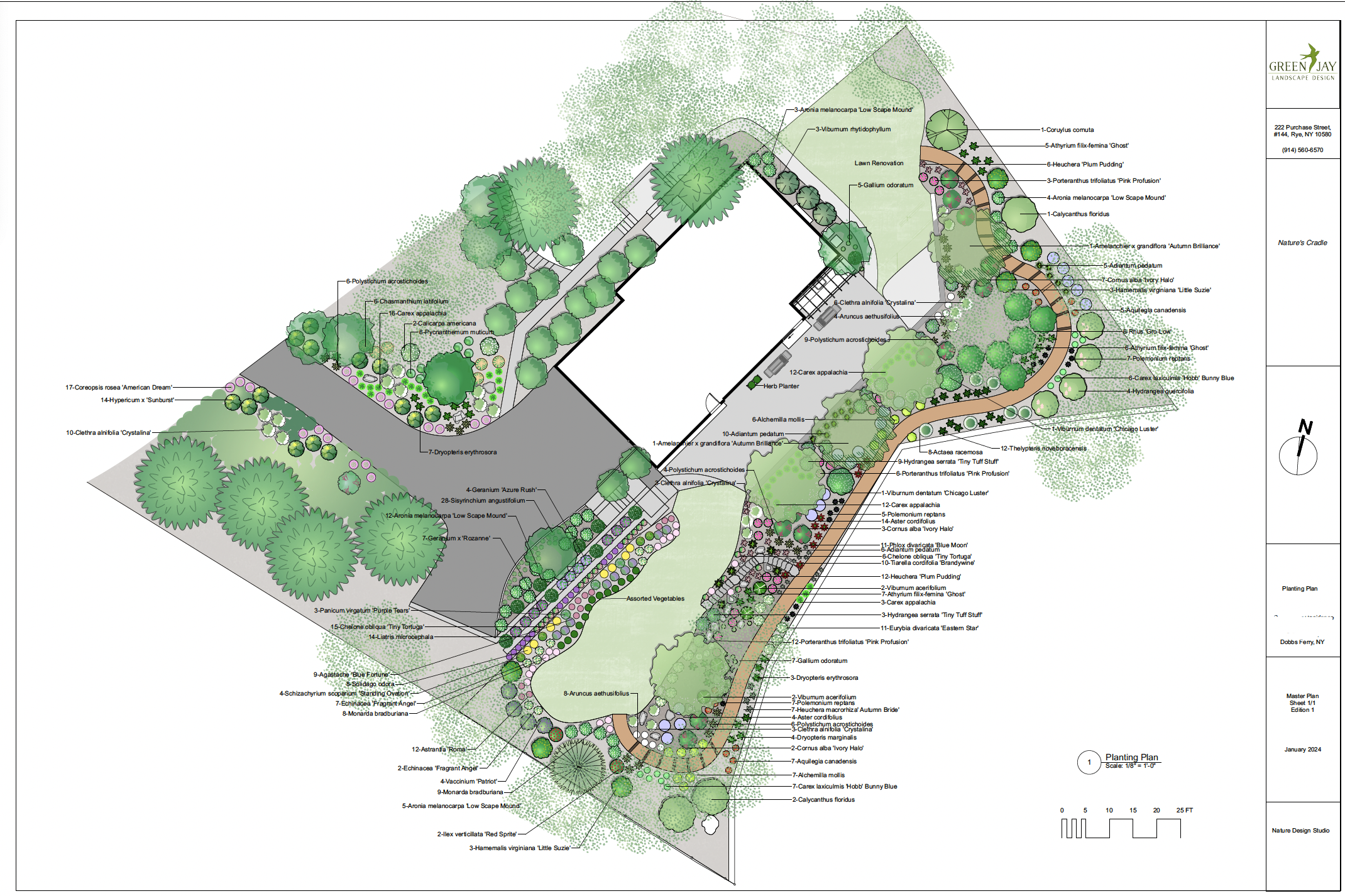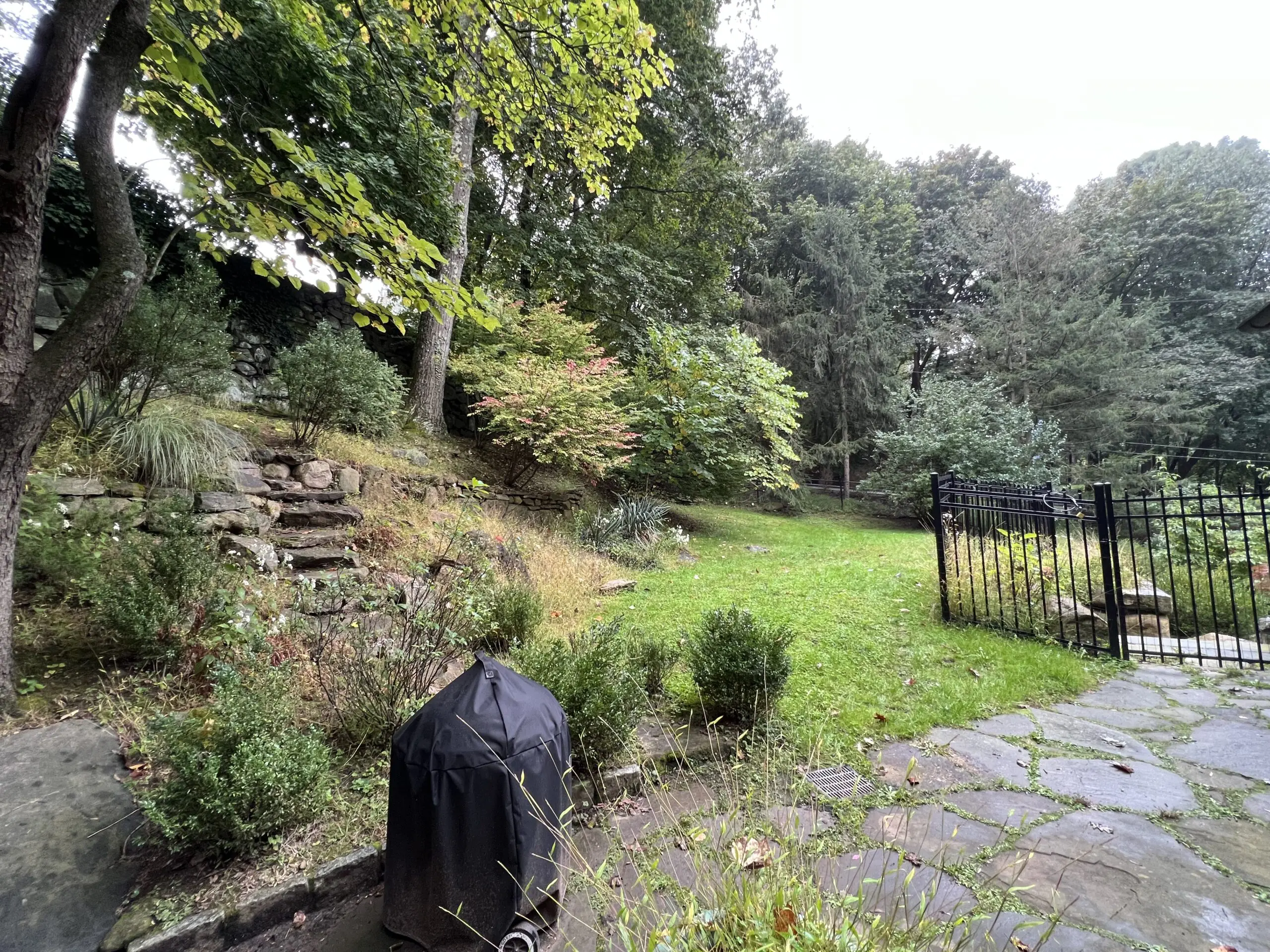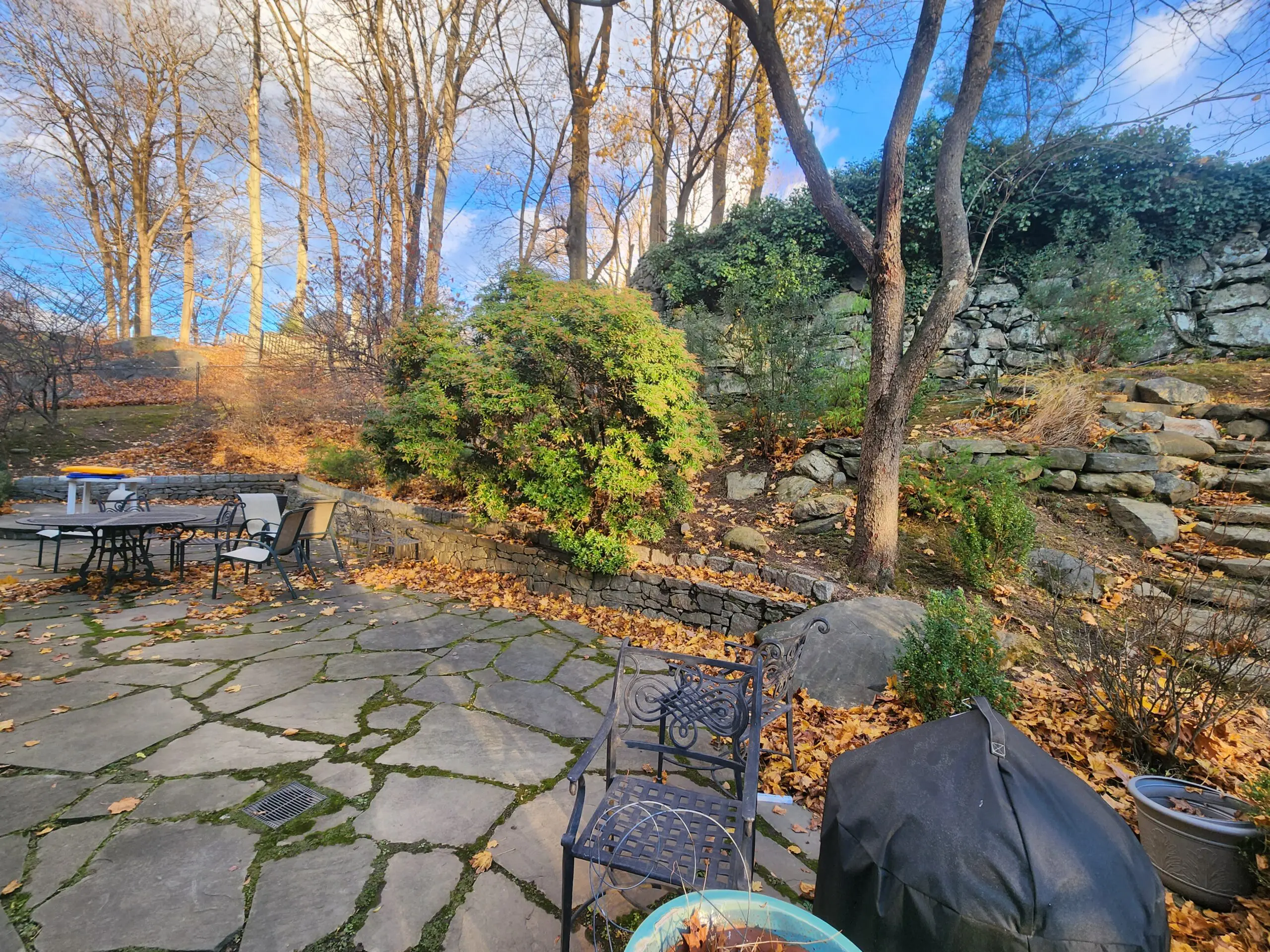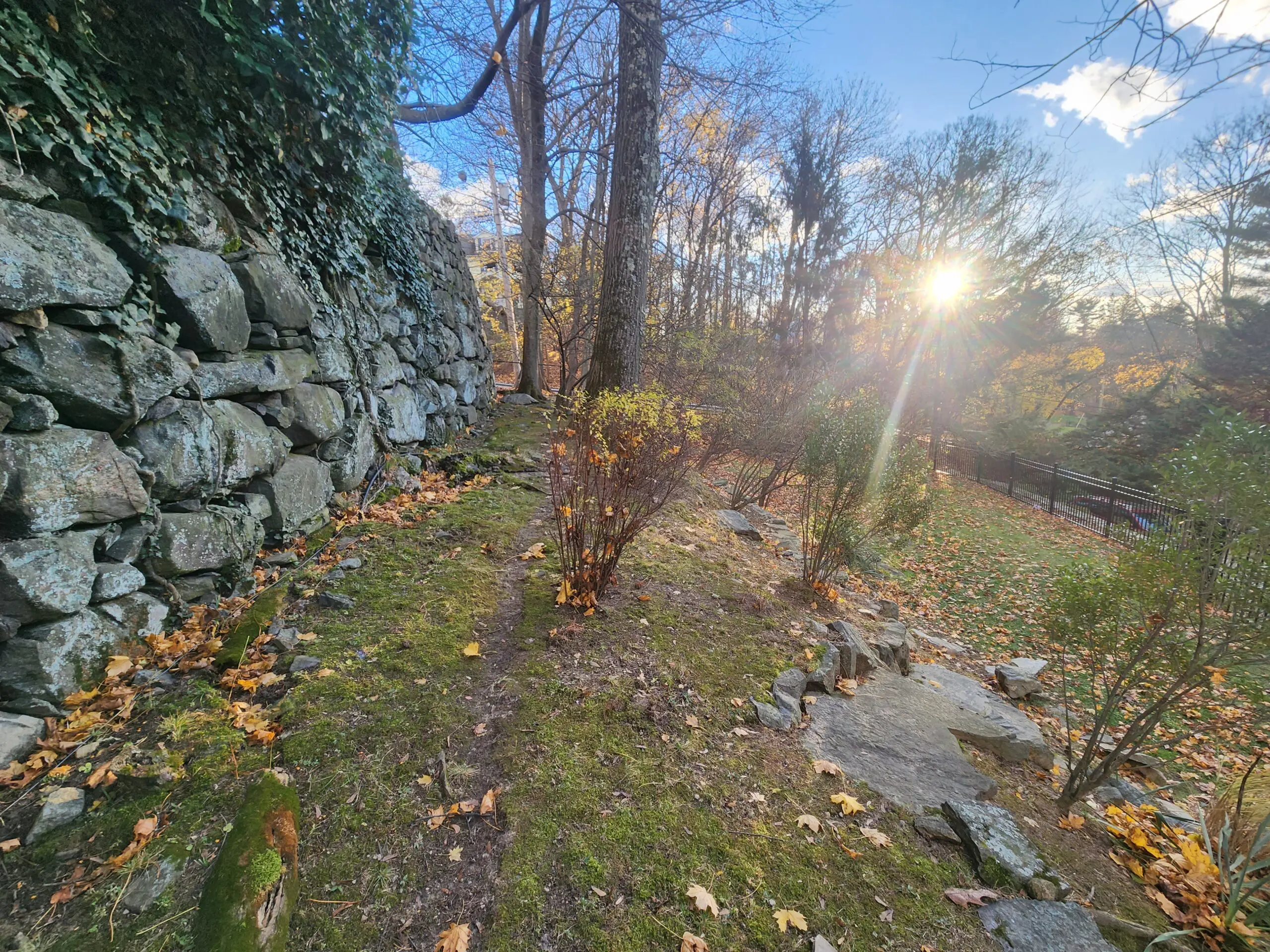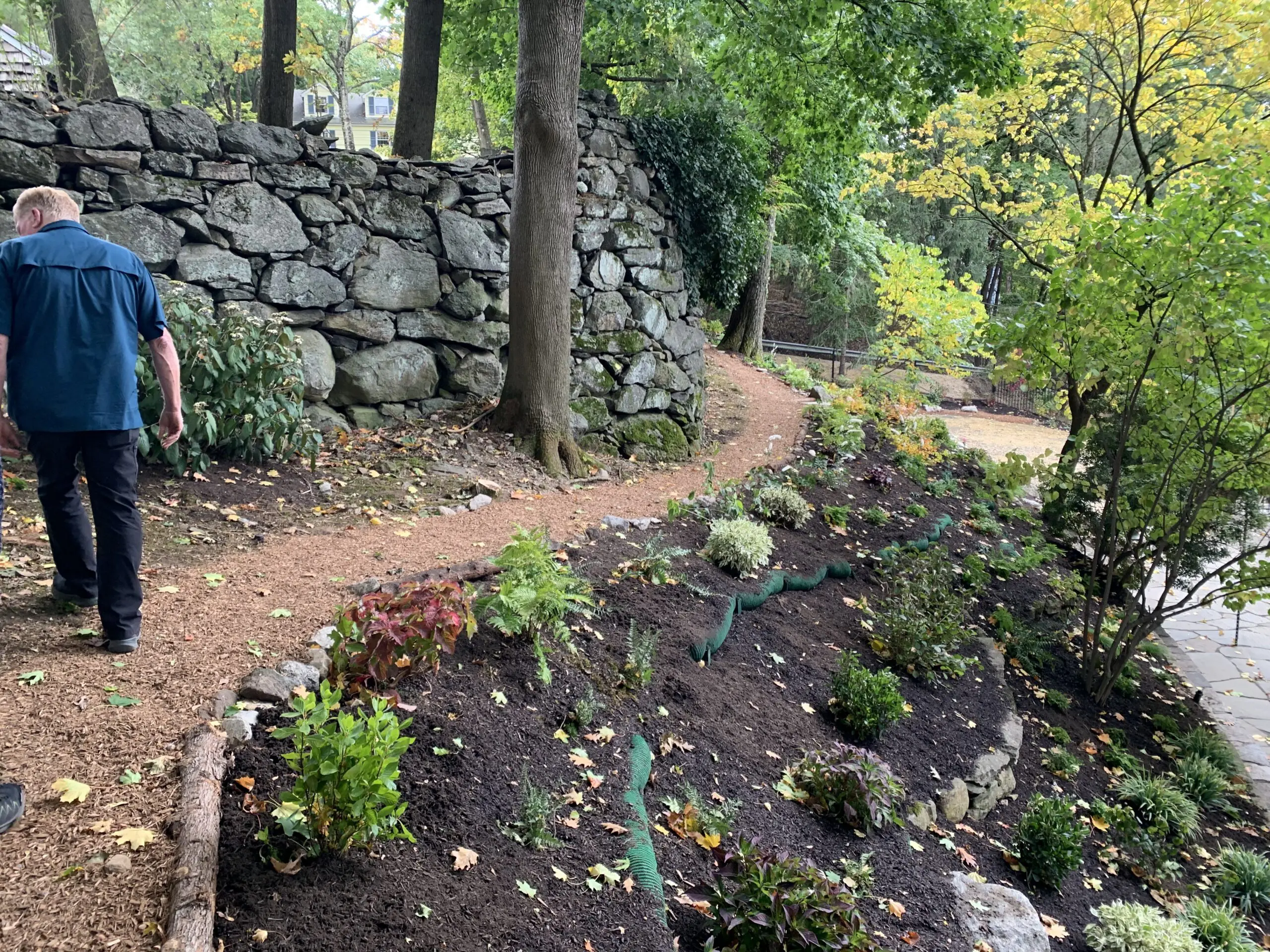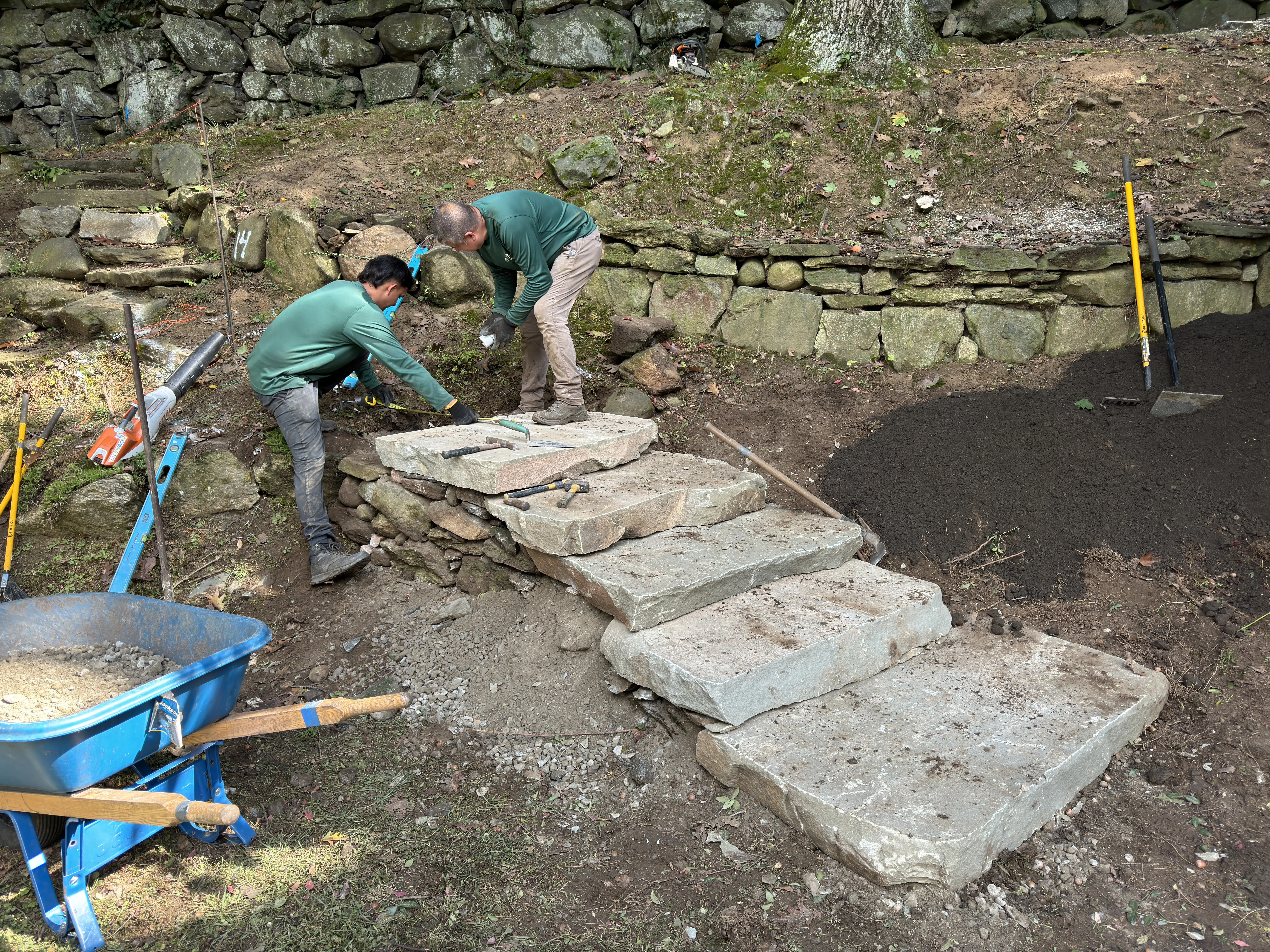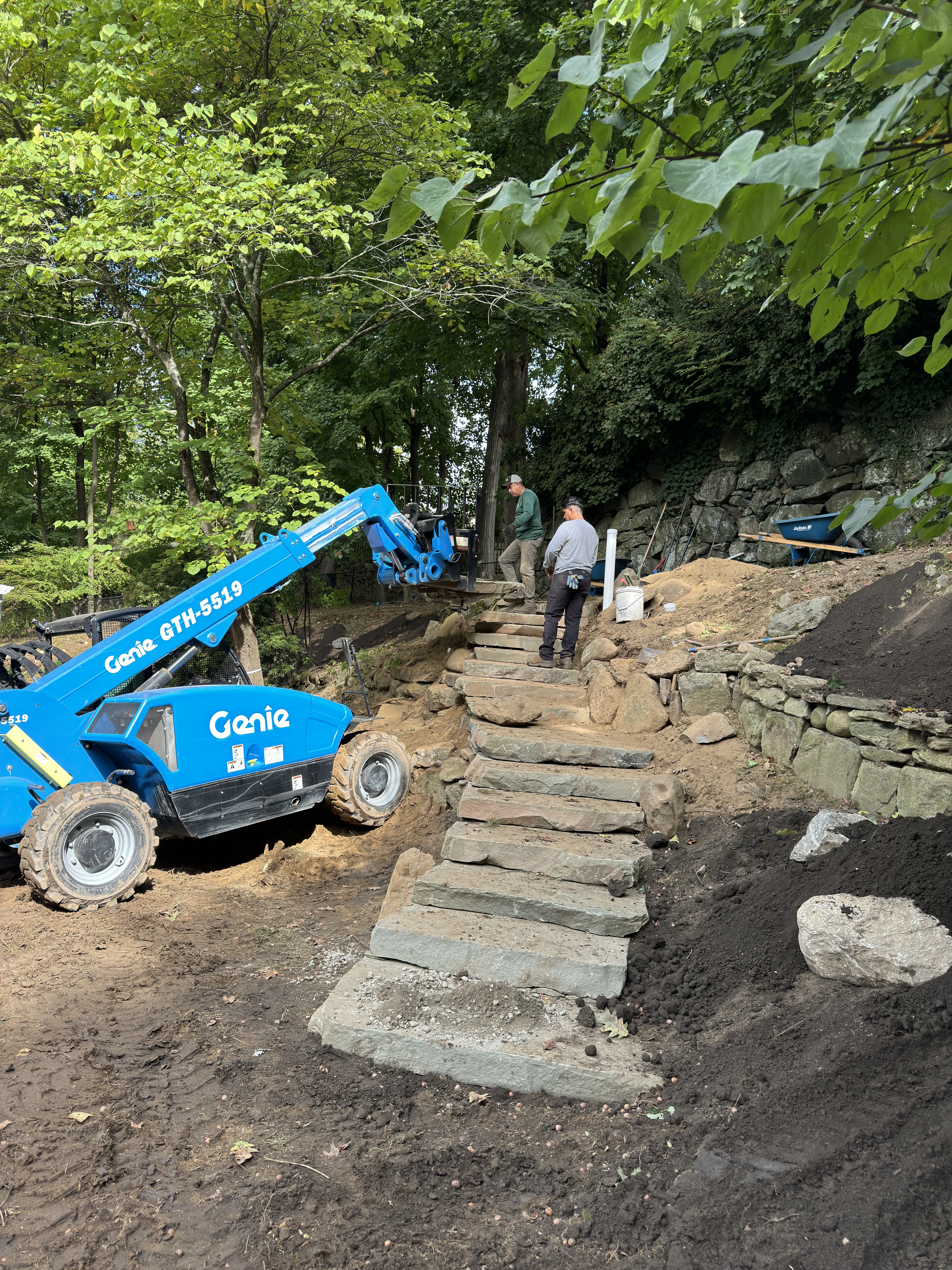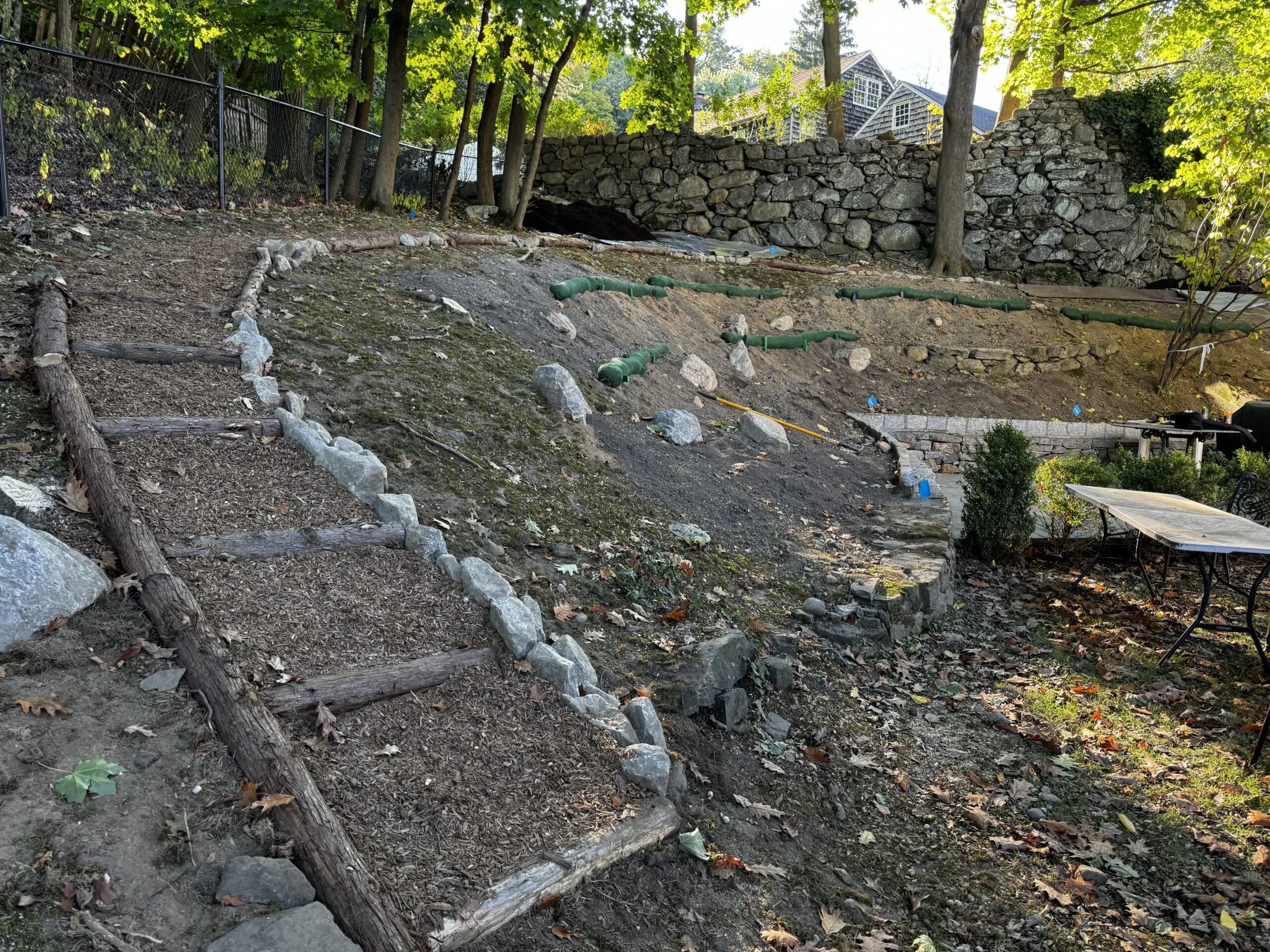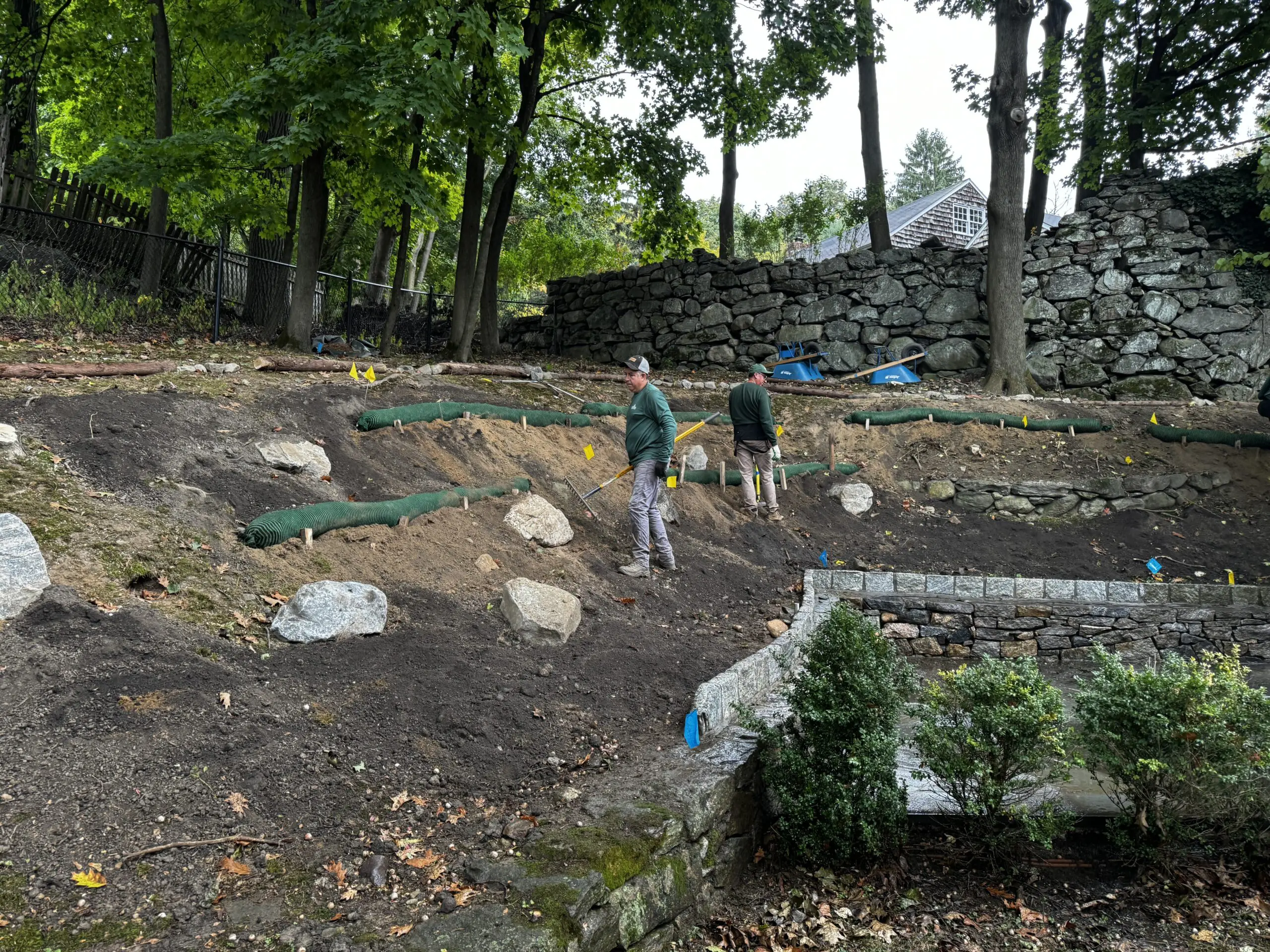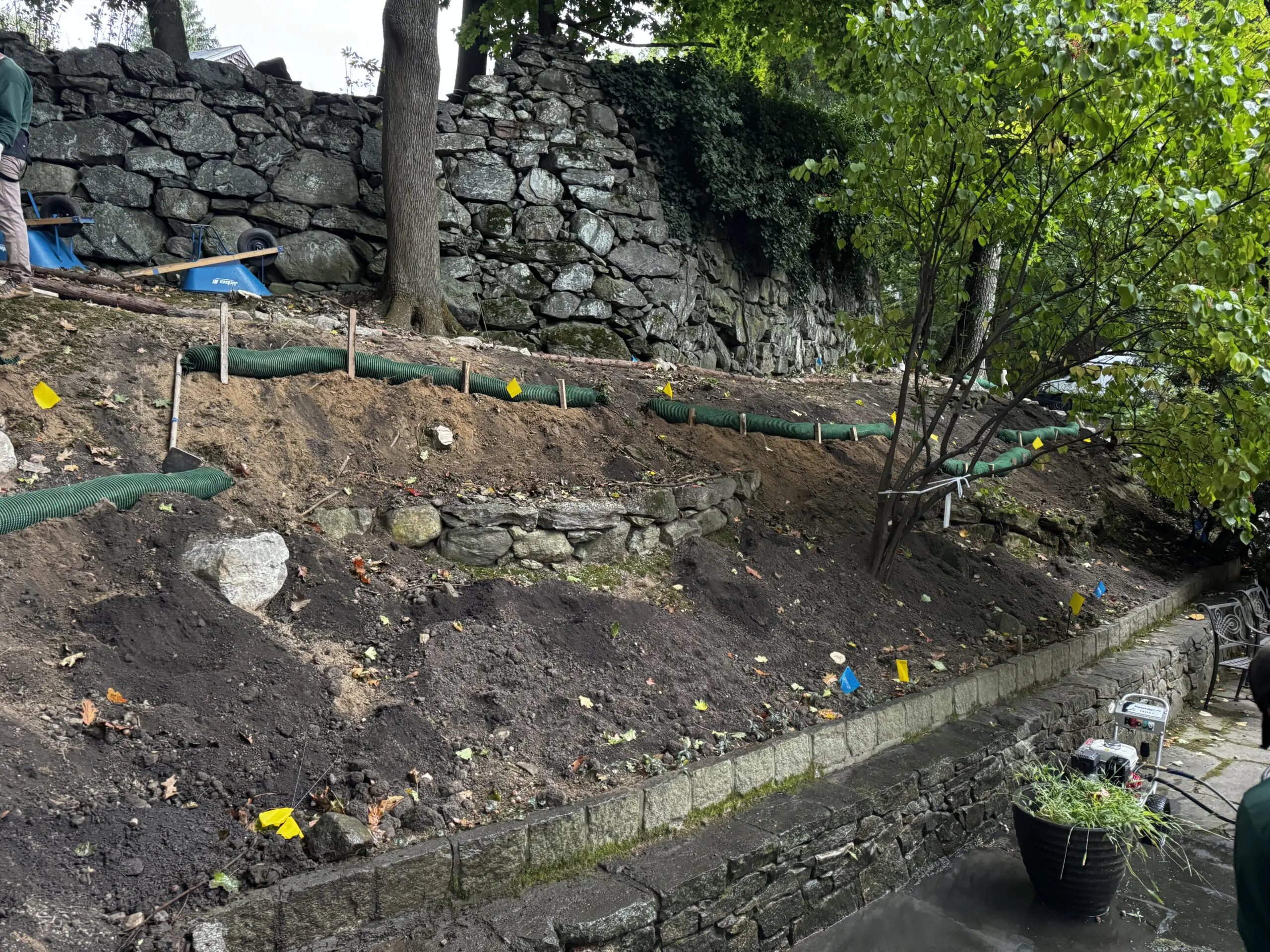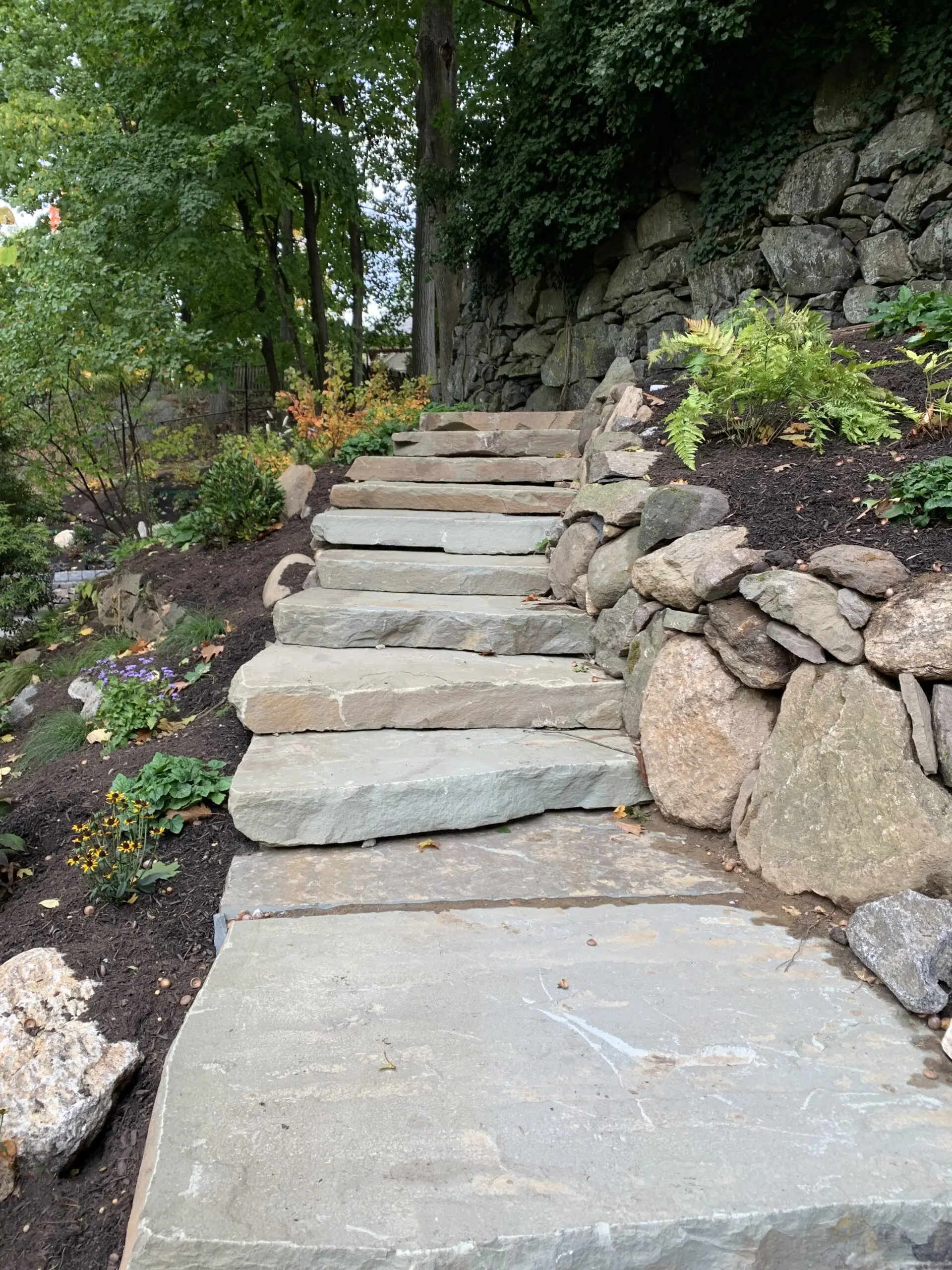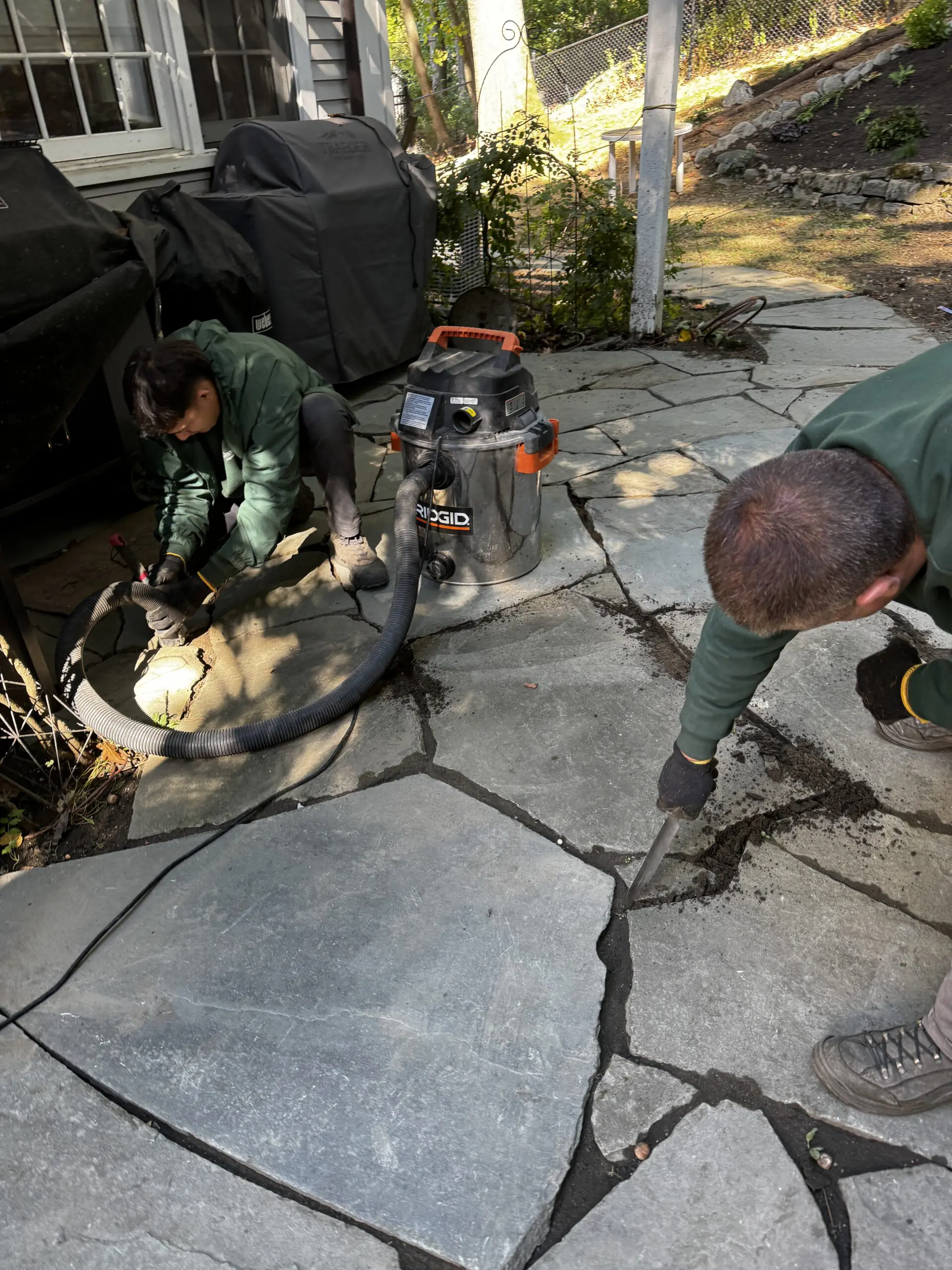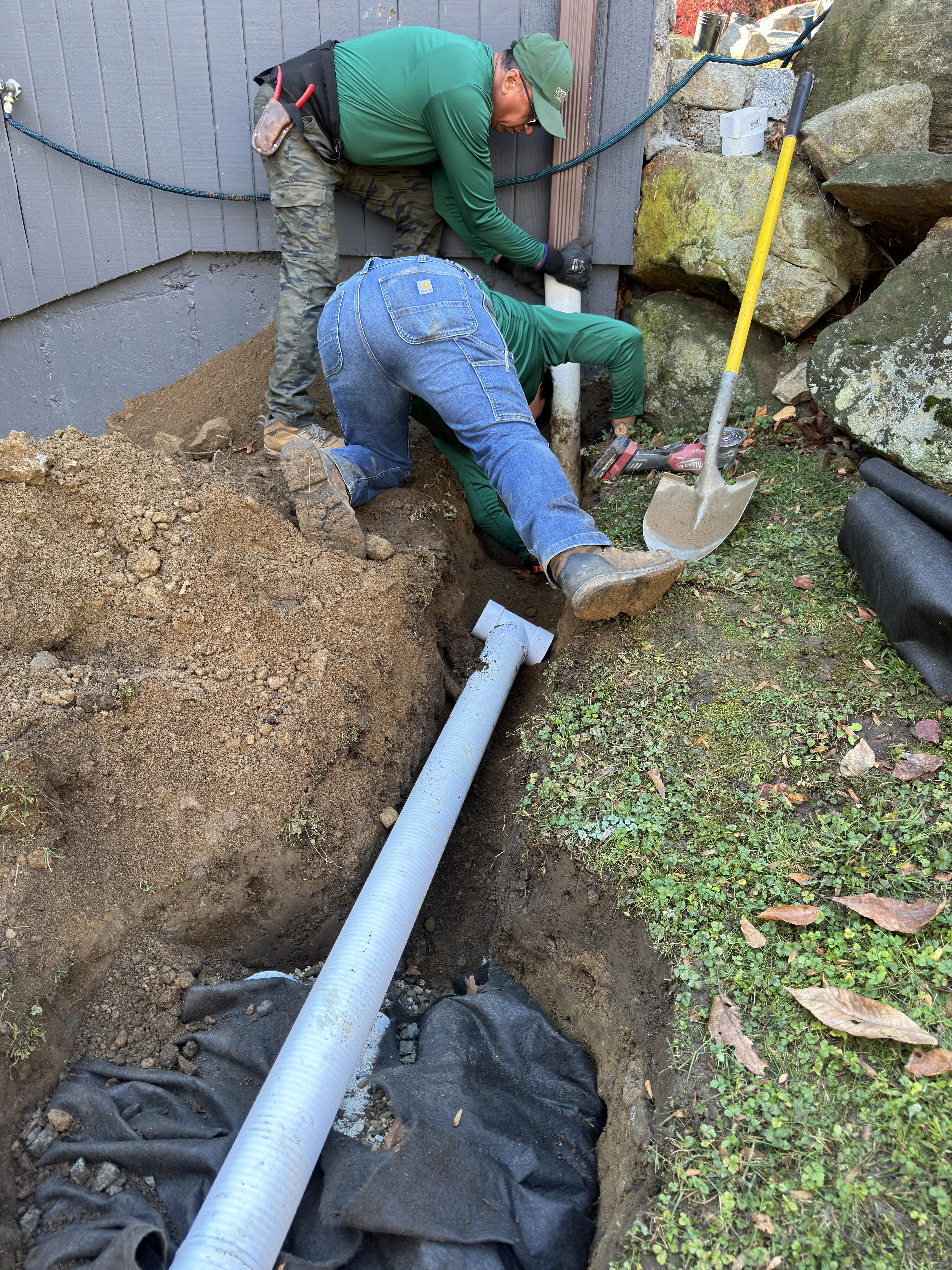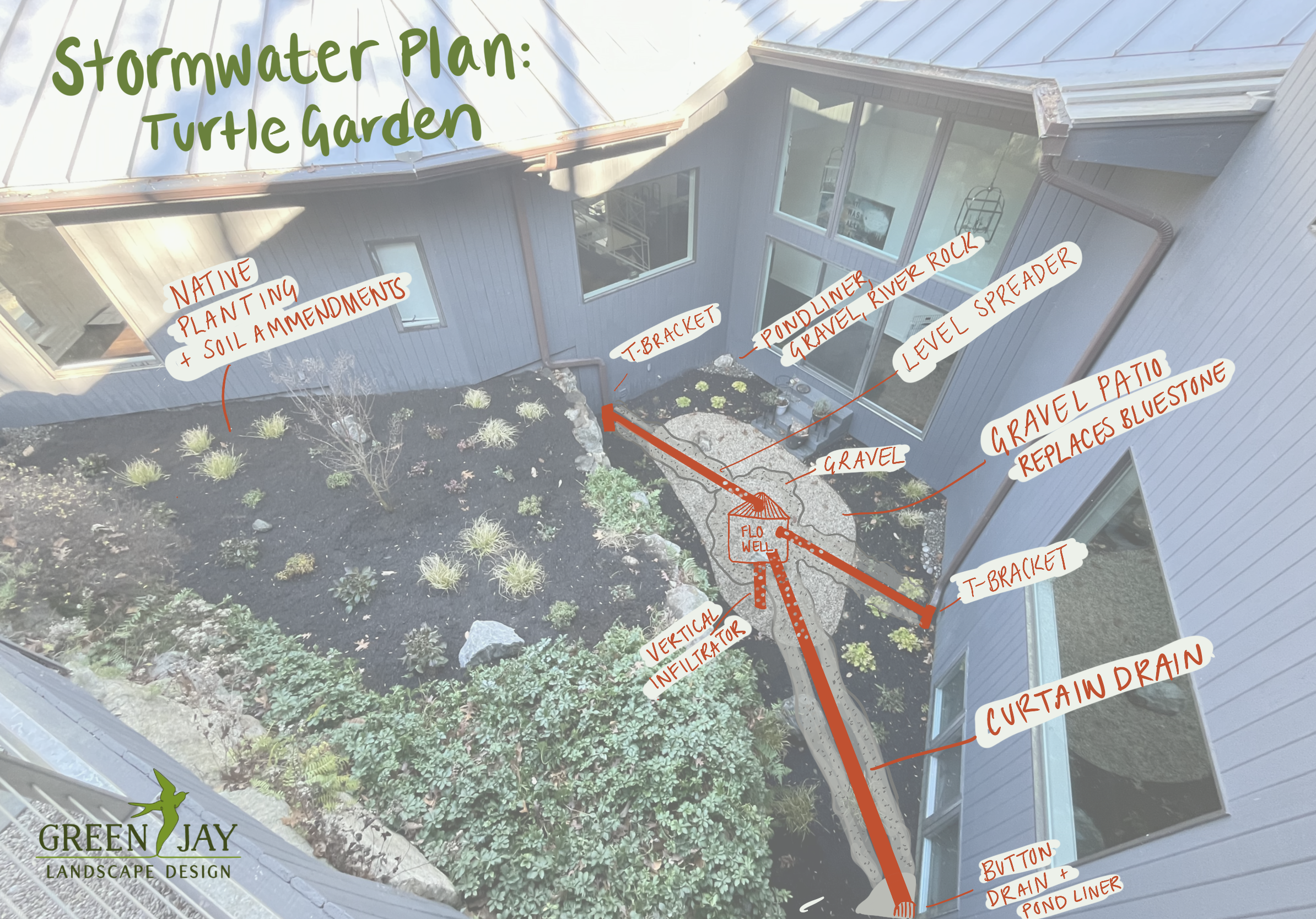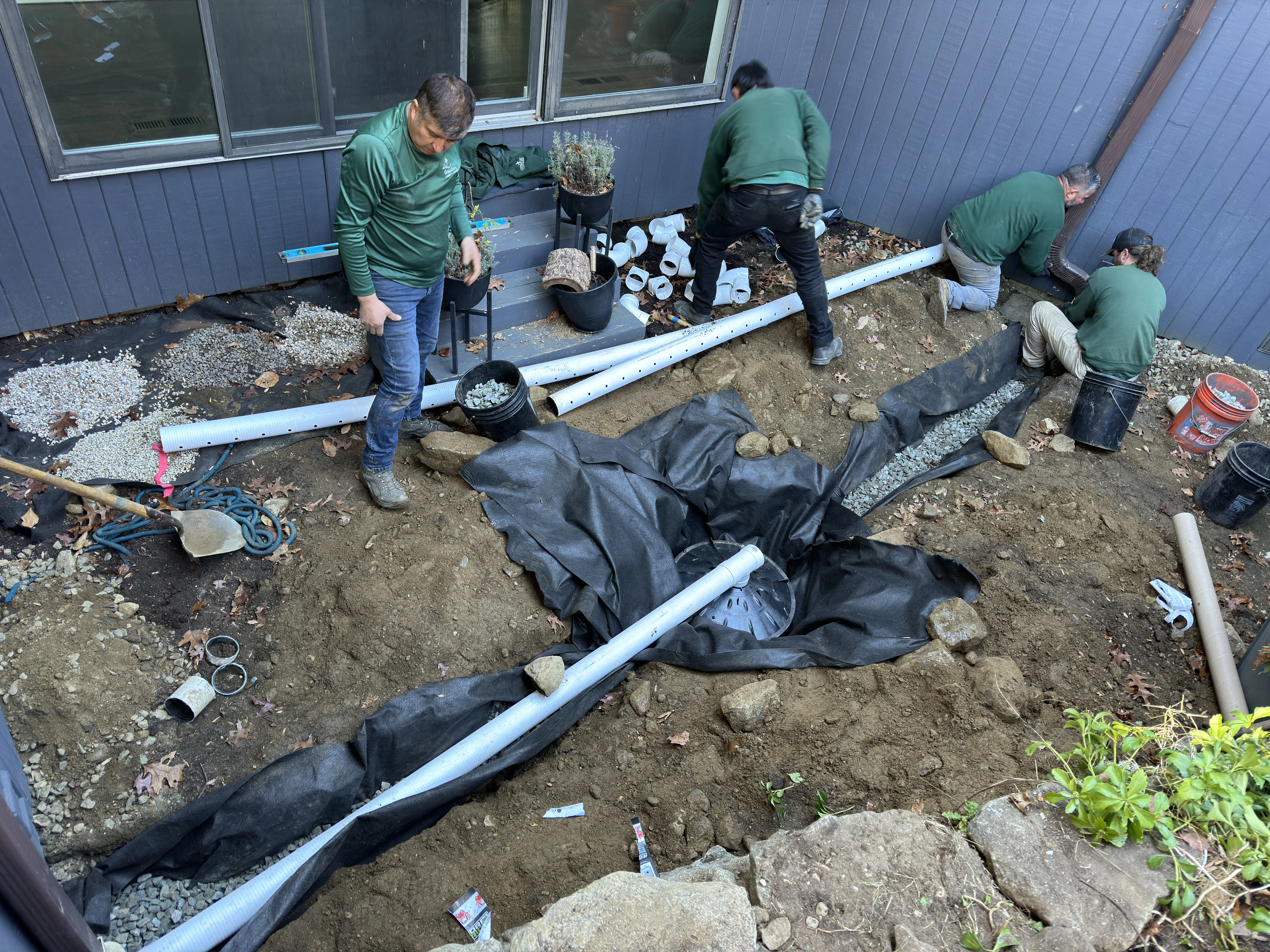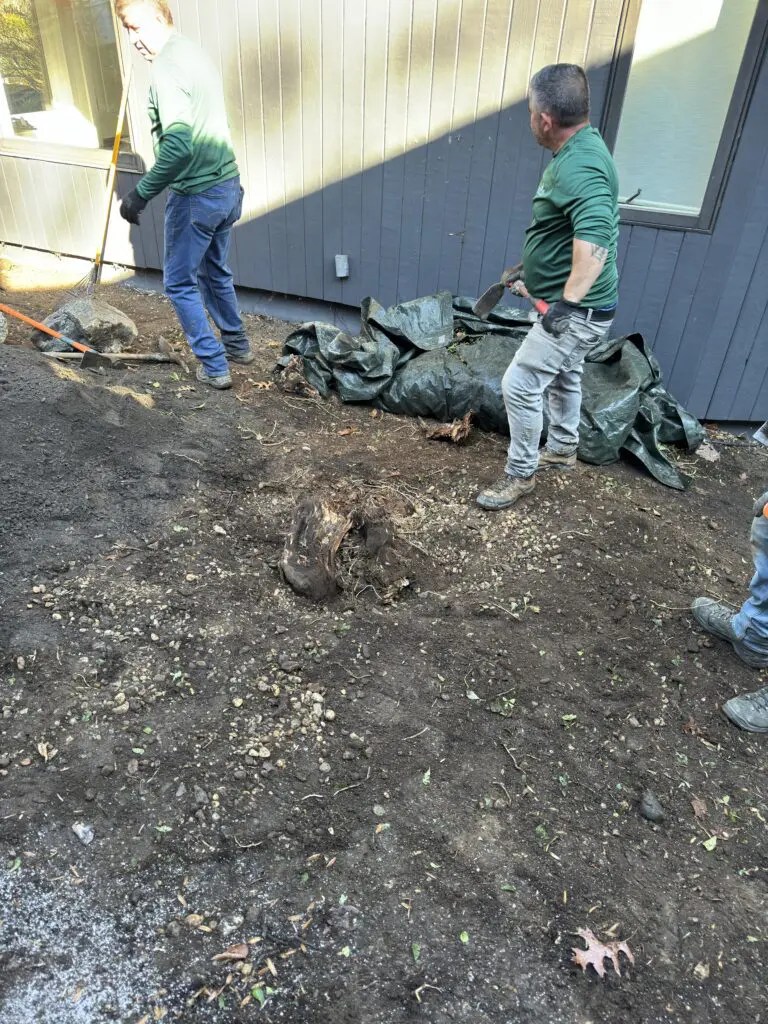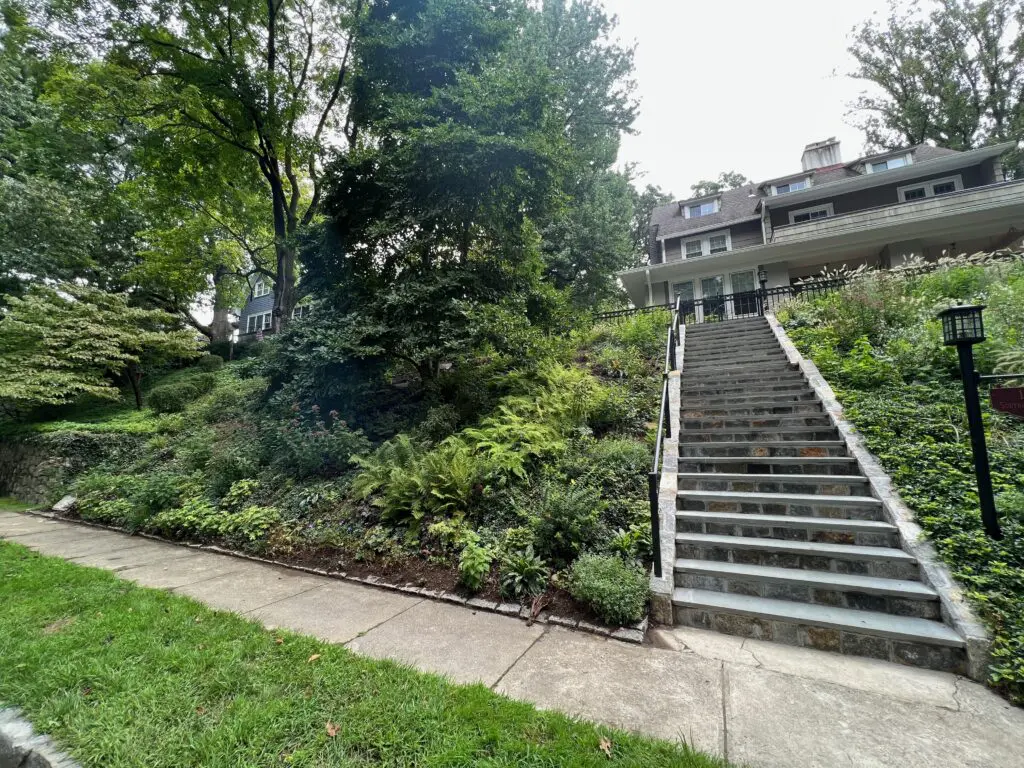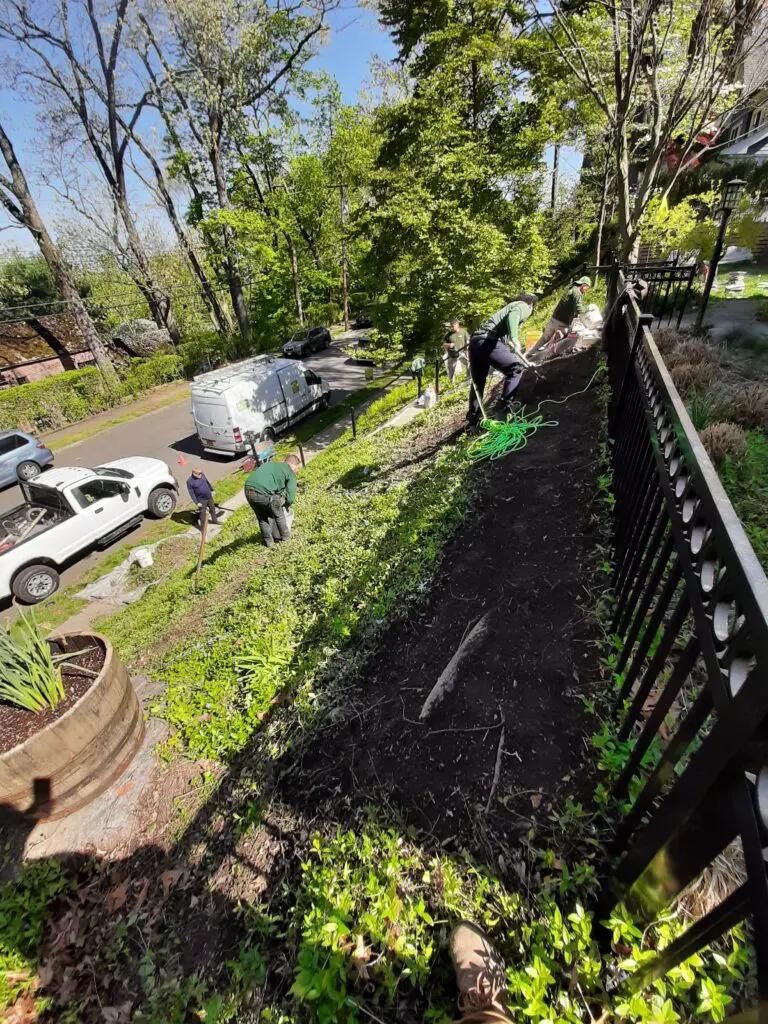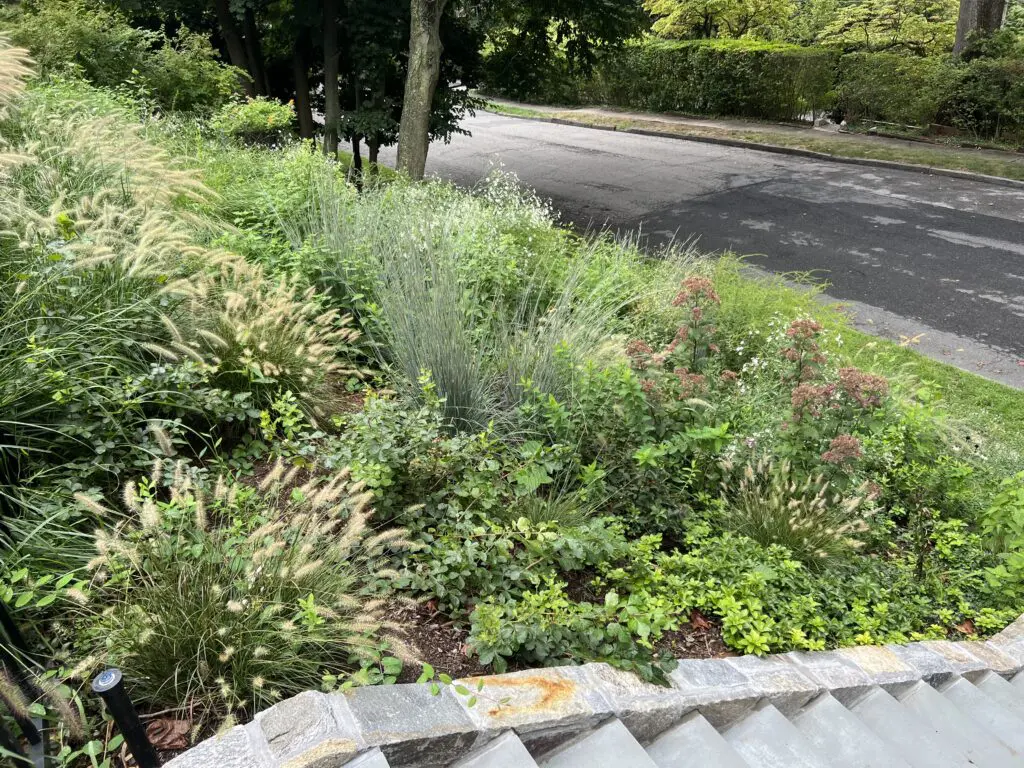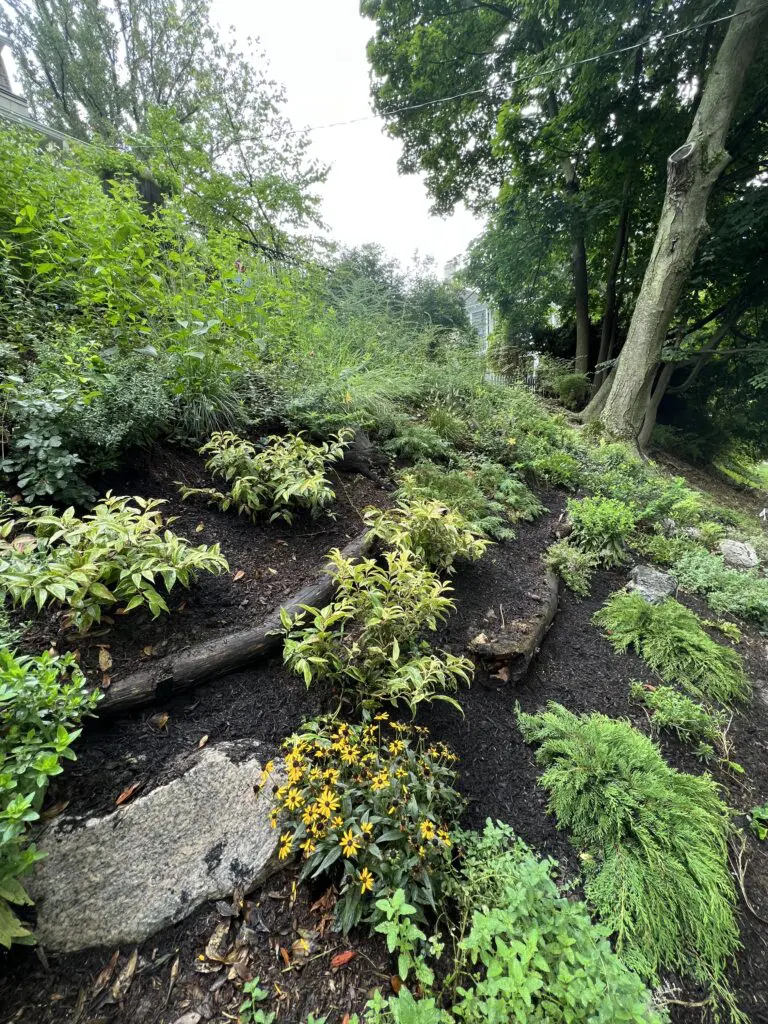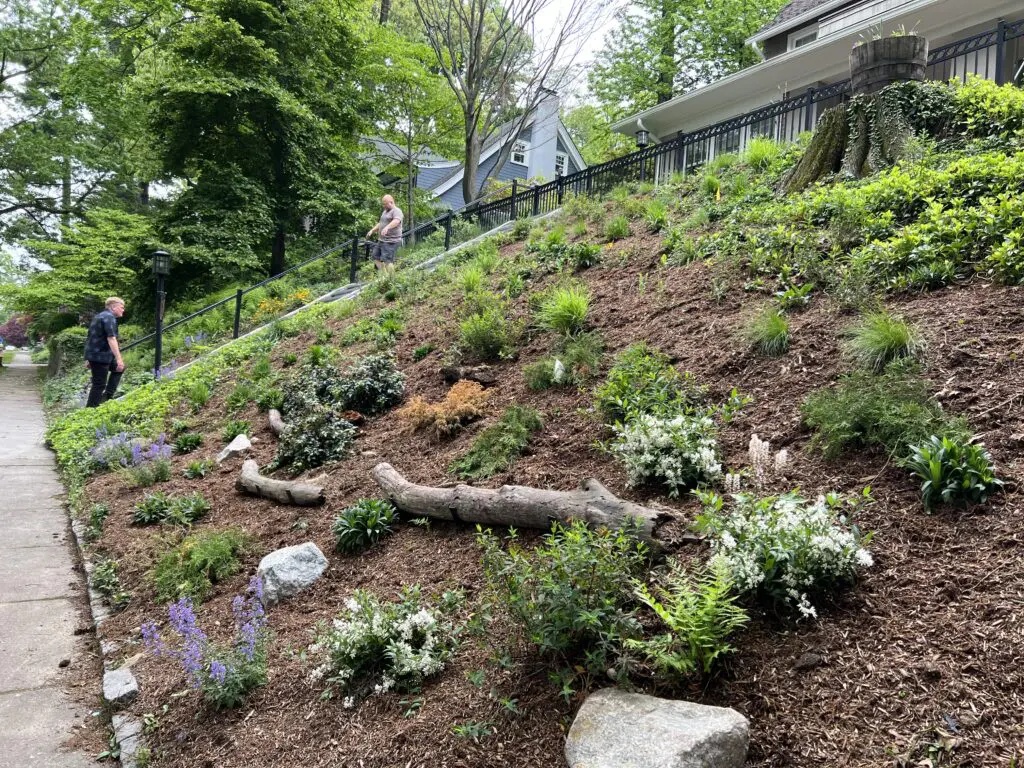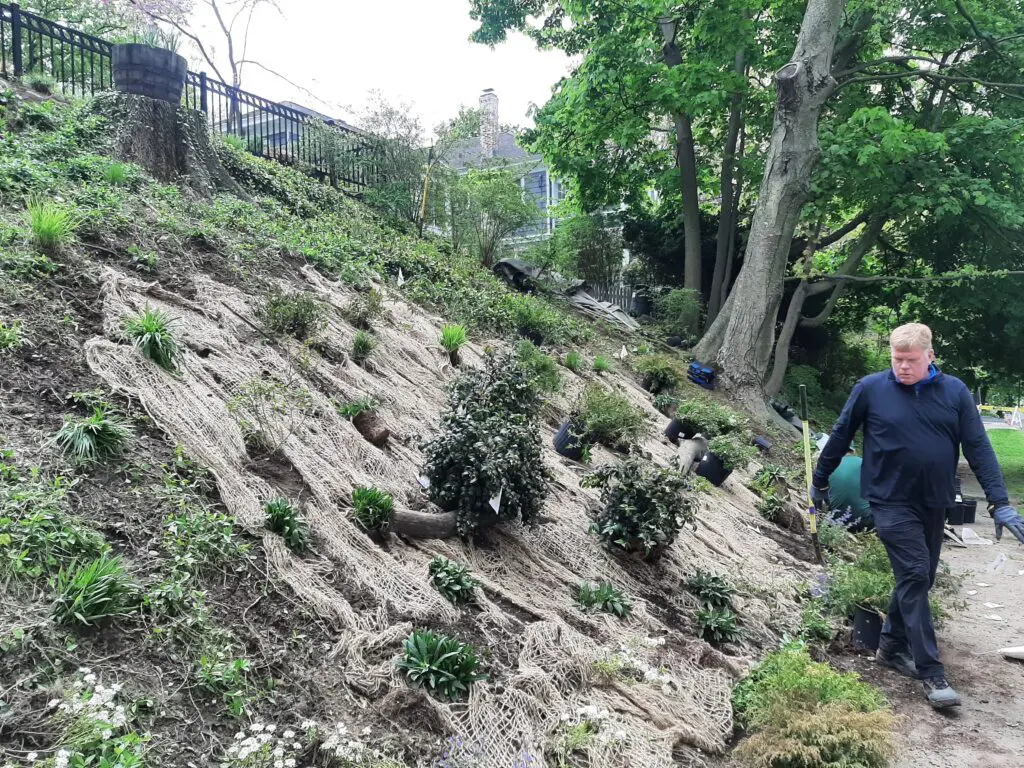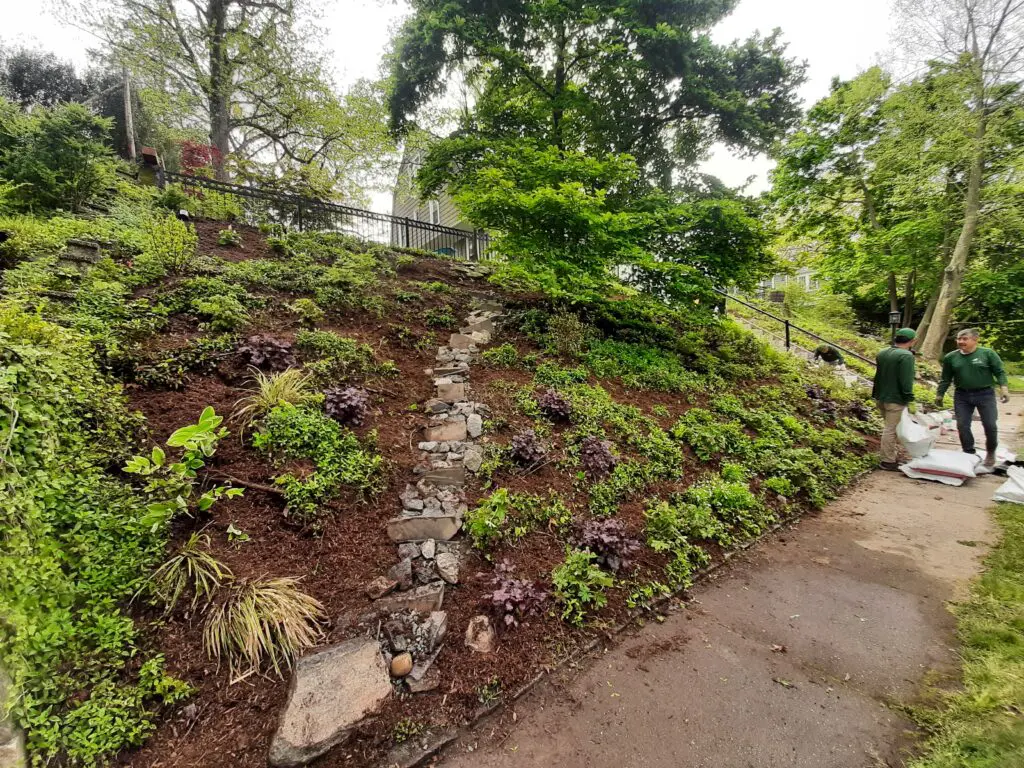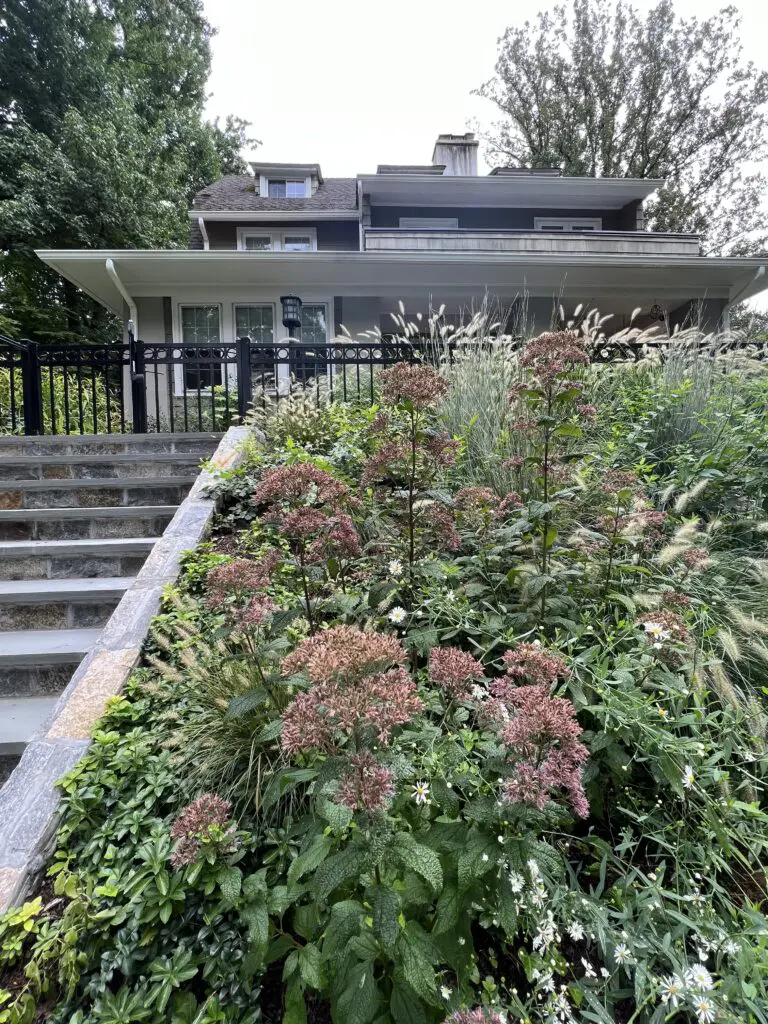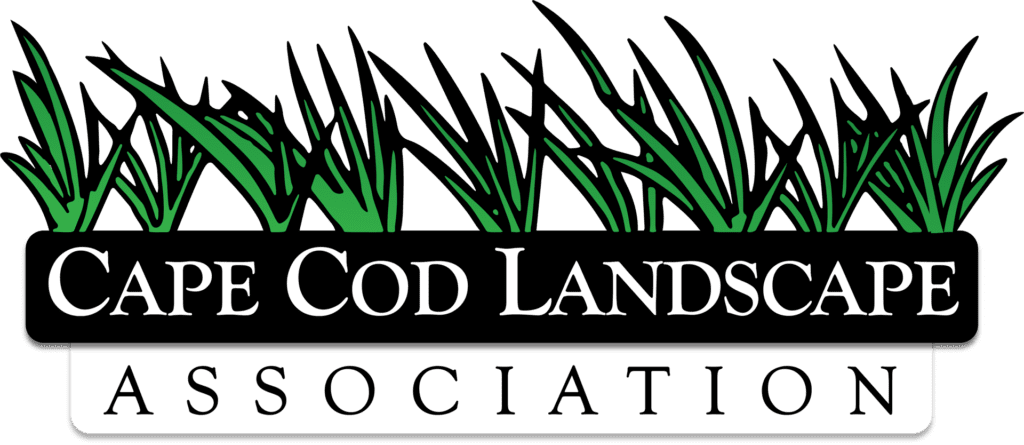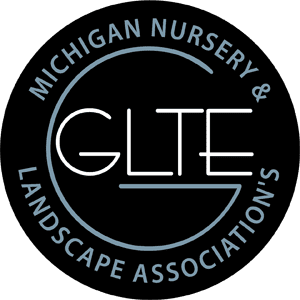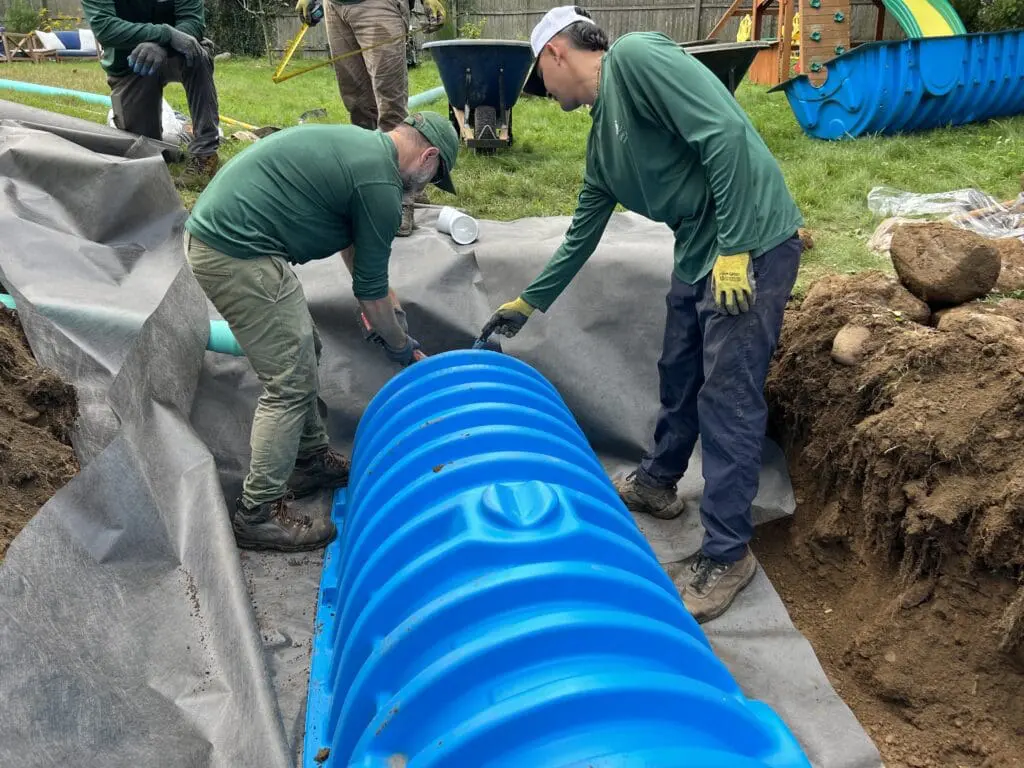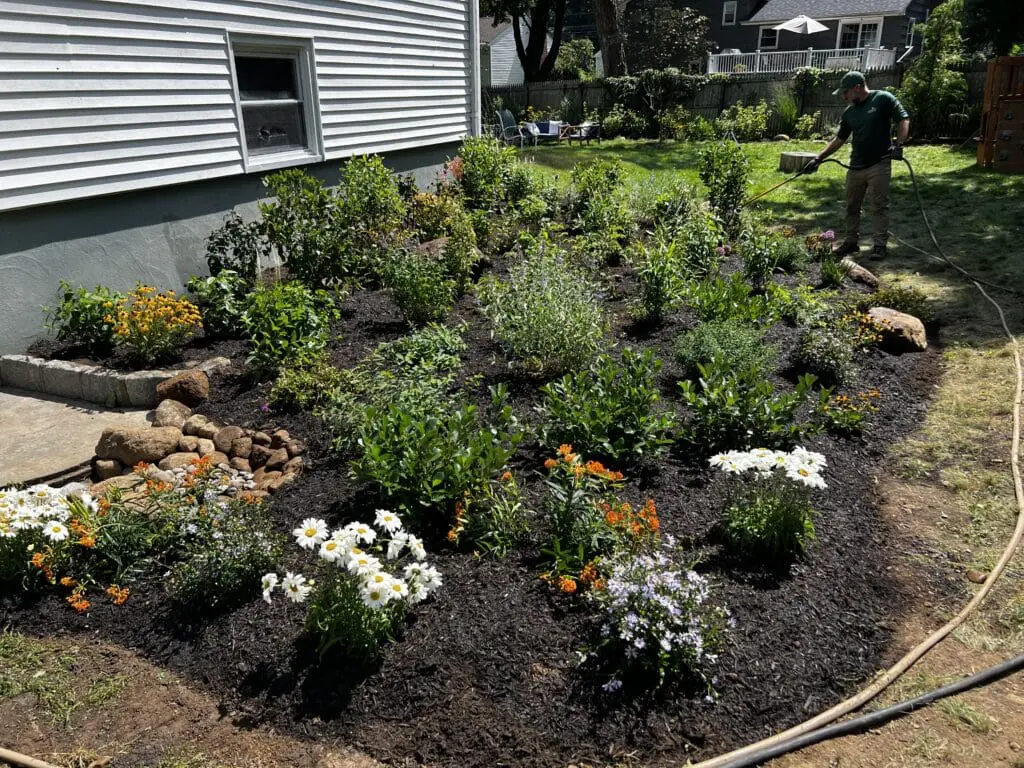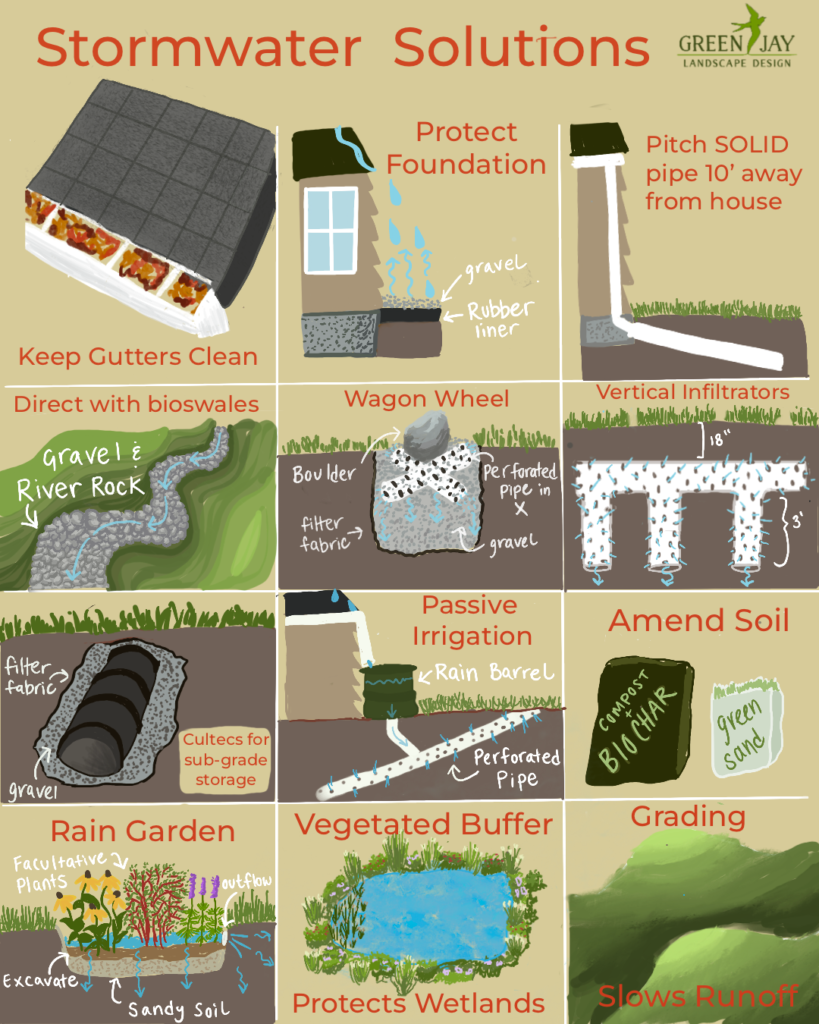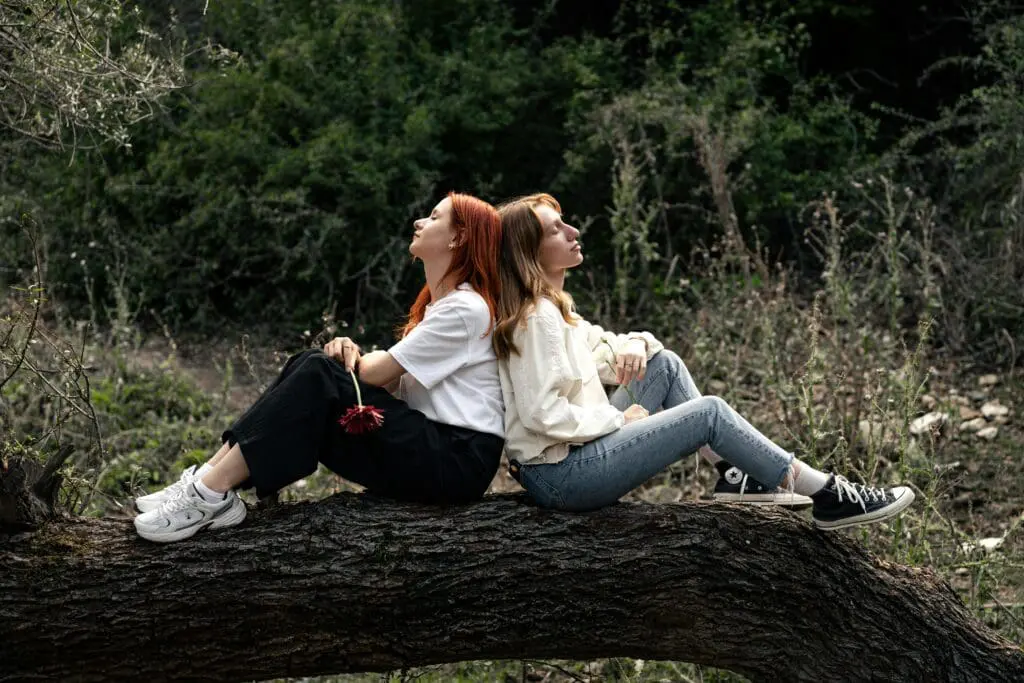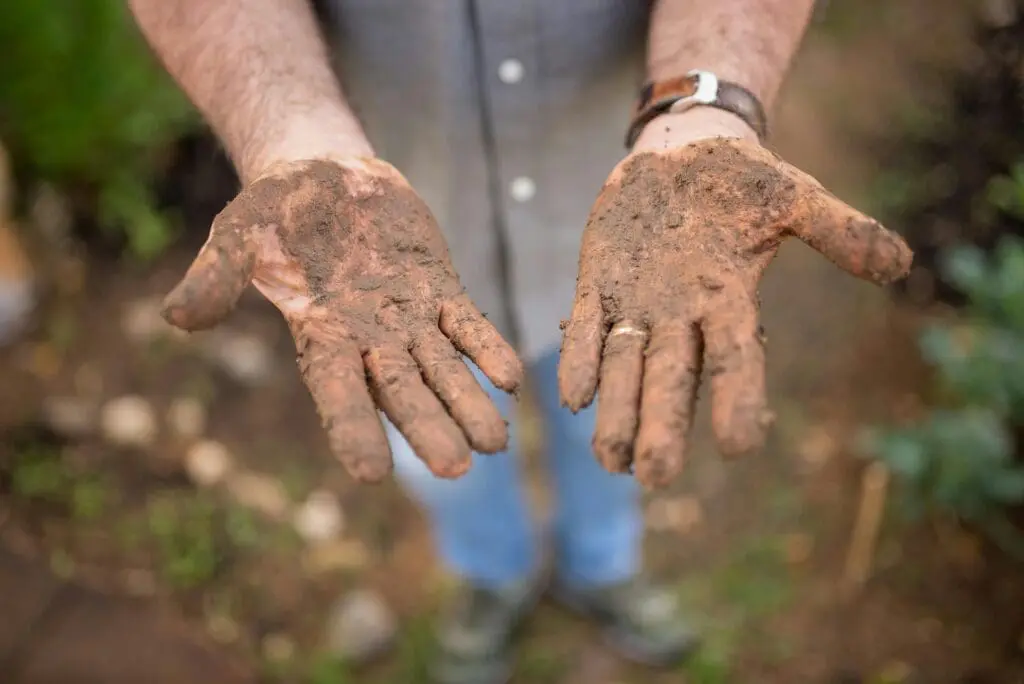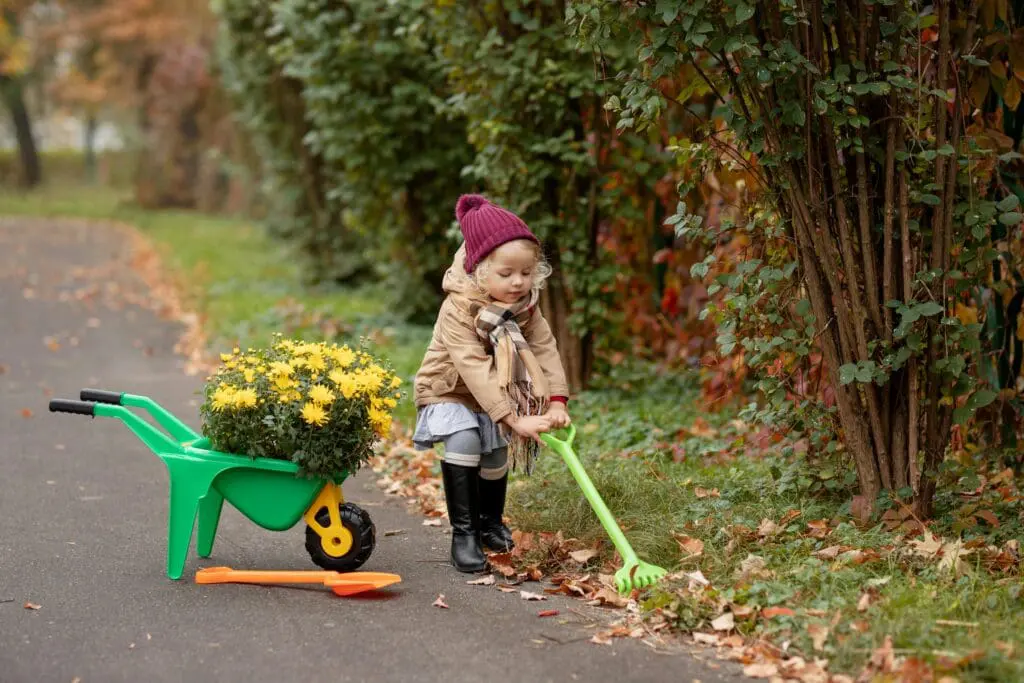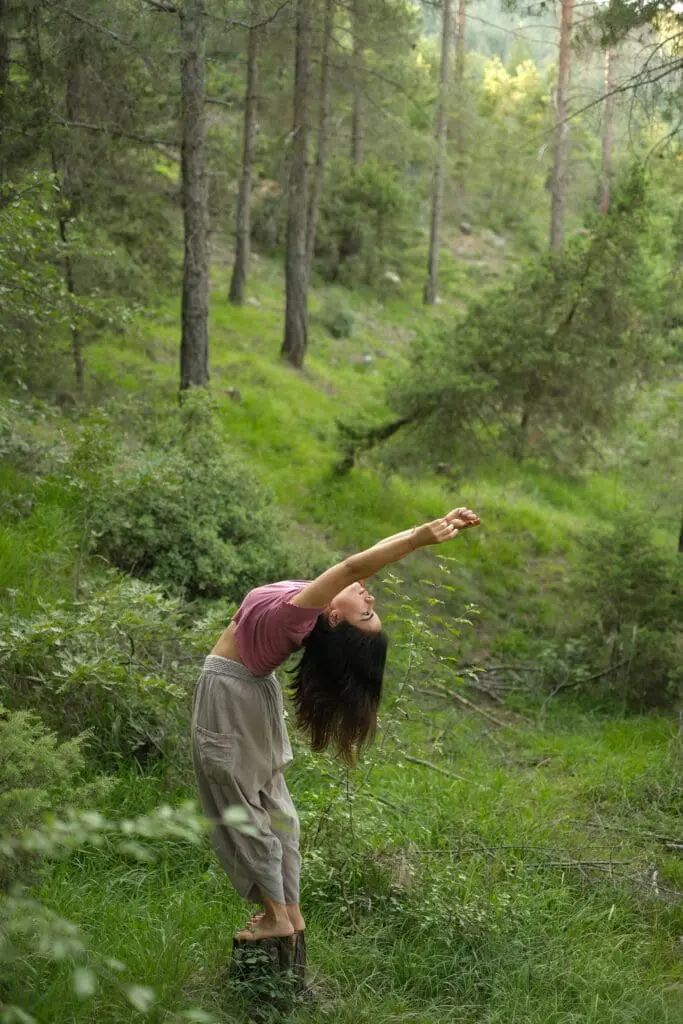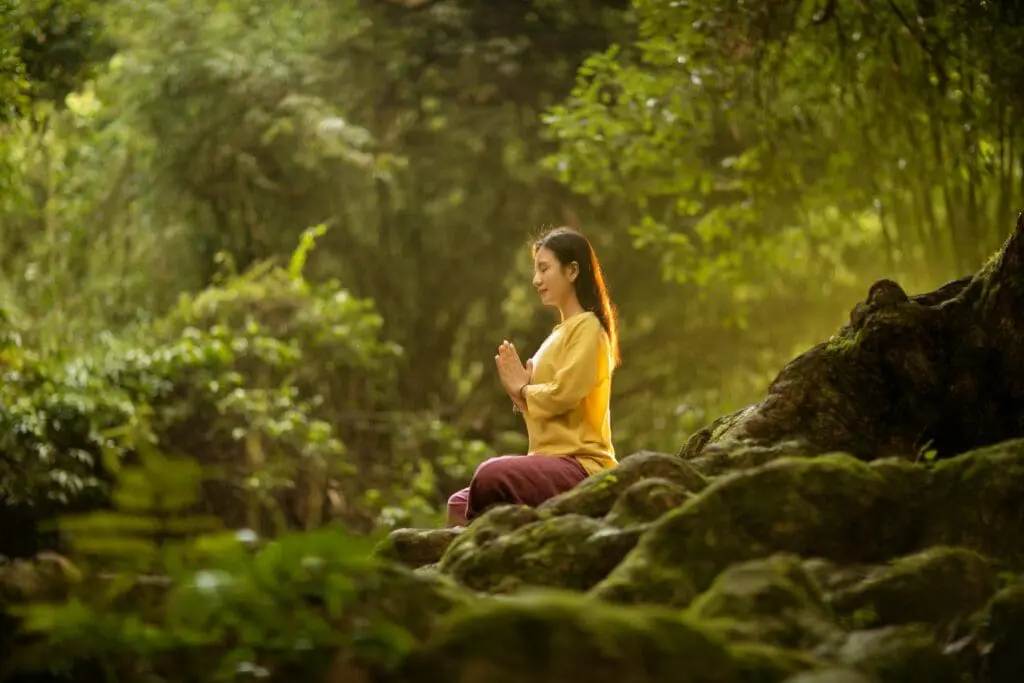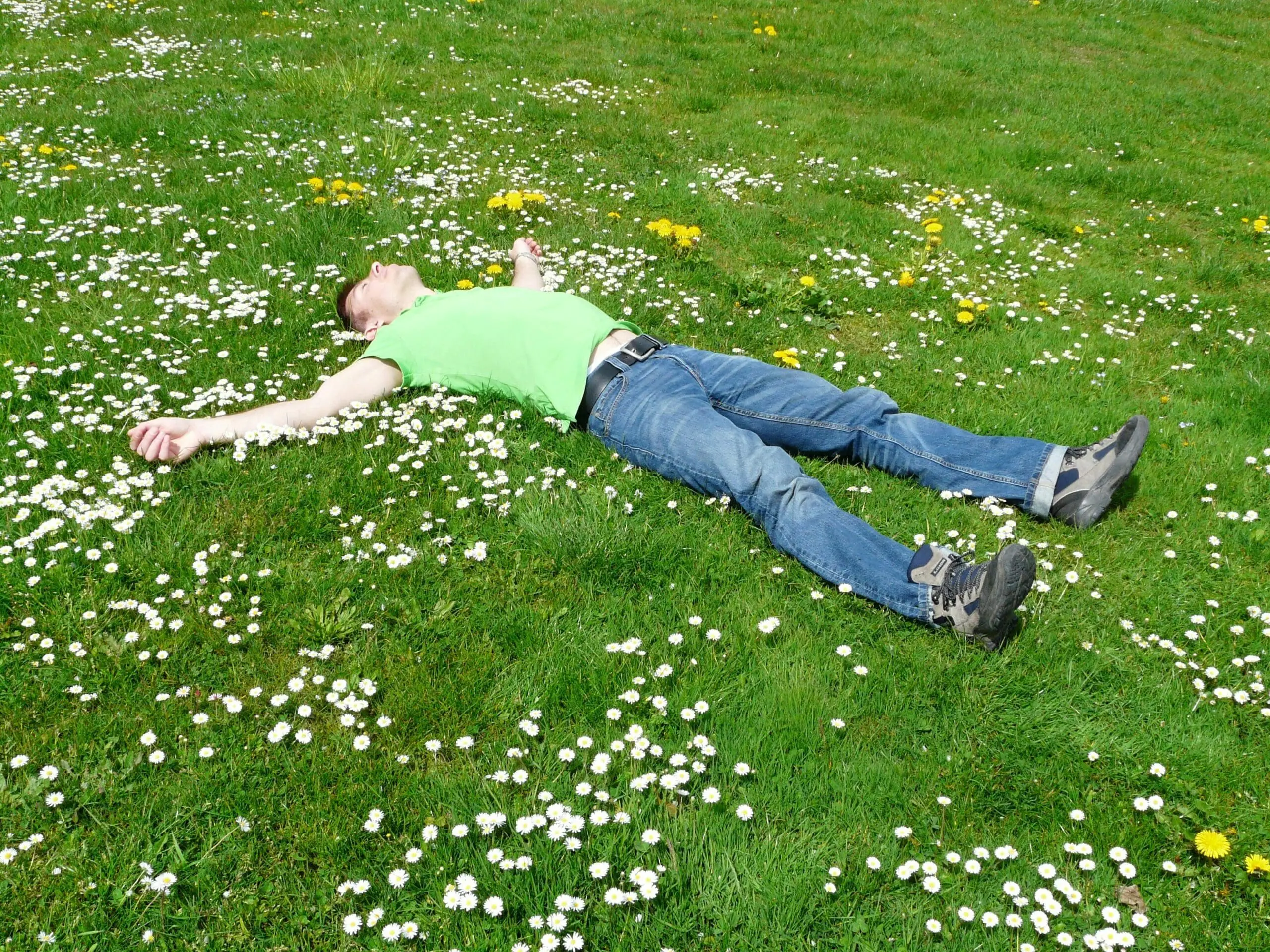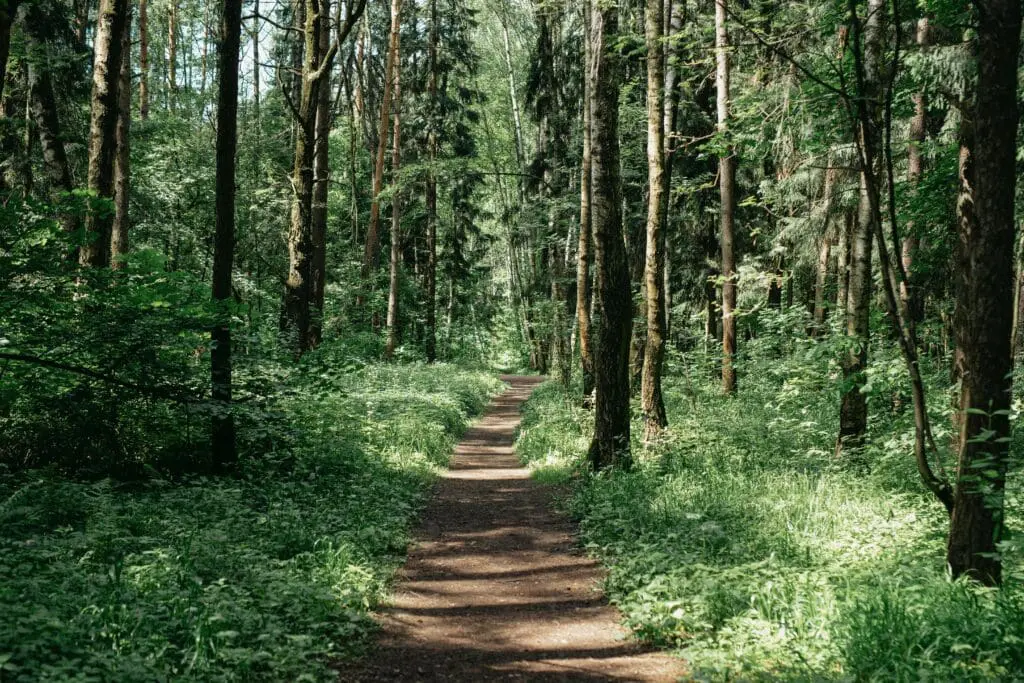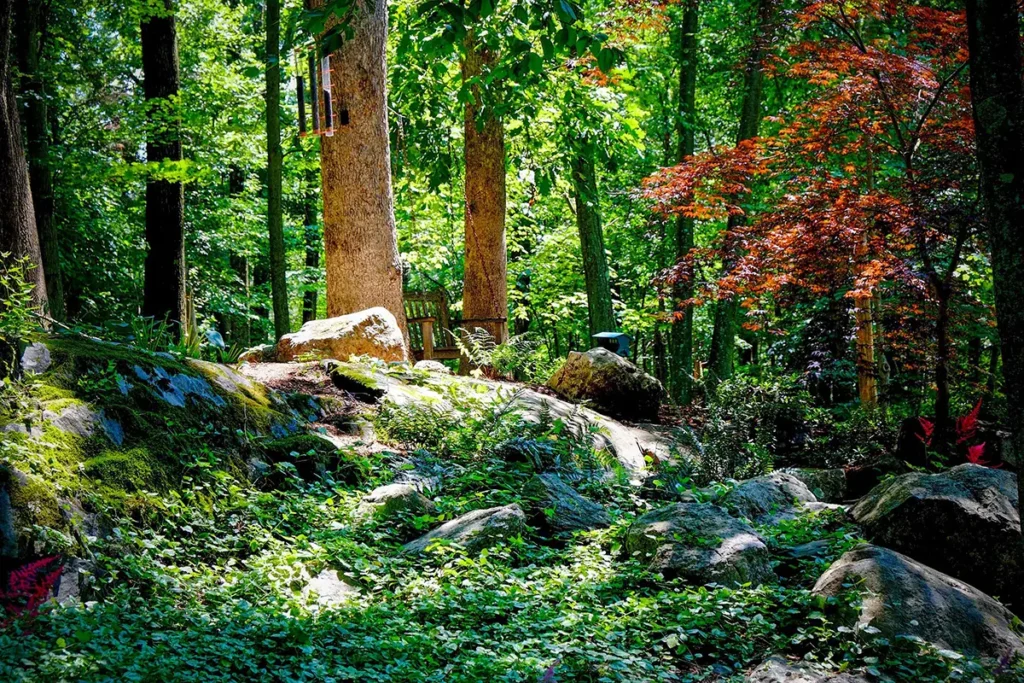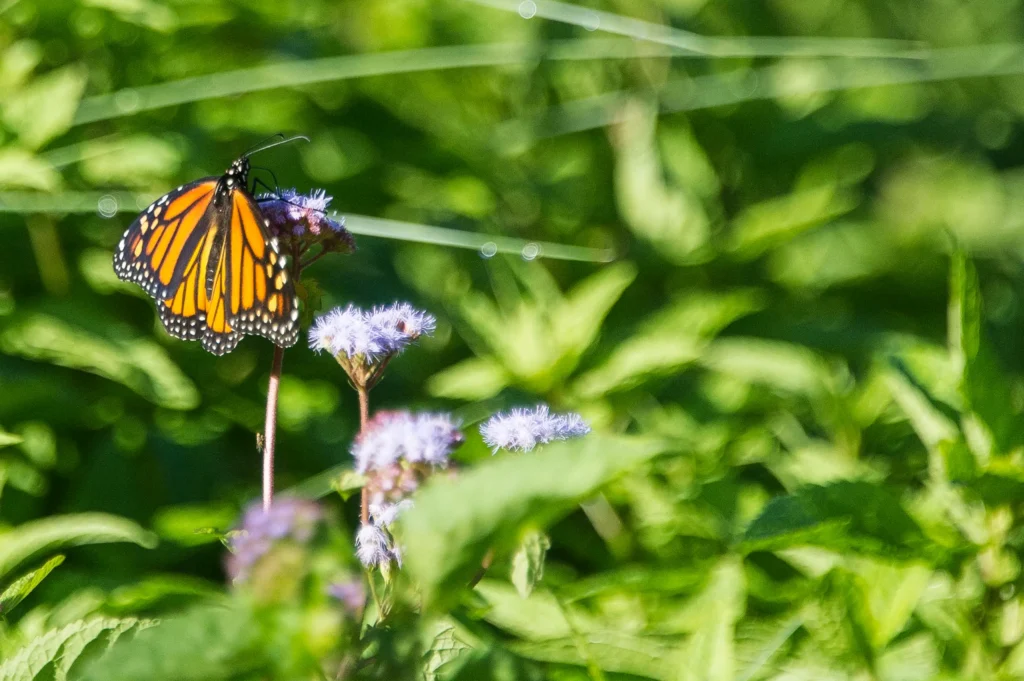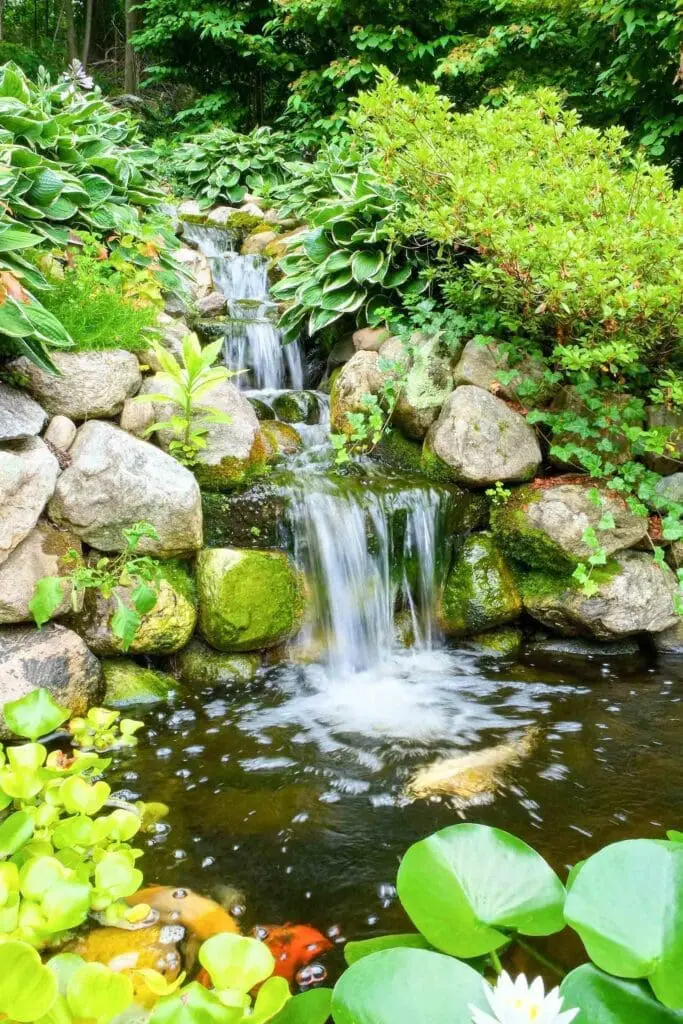Childhood is a magical time, filled with curiosity, creativity, and play. For these Montclair, New Jersey clients, it was important to transform their backyard into a child-centric play area that felt incorporated into the landscape. Natural Play Areas are built with natural materials and foster different types of outdoor play and movement, and an appreciation for nature. With more and more children spending time indoors in front of screens, designing appealing play areas at home makes access to outdoor nature play easy and part of a regular routine.

Designing Natural Play Areas
We had a blast collaborating with our clients on what kind of play spaces were most desirable for their family. Effective play areas for children foster spontaneous play – where the kids can take the wheel and let their imagination run wild.
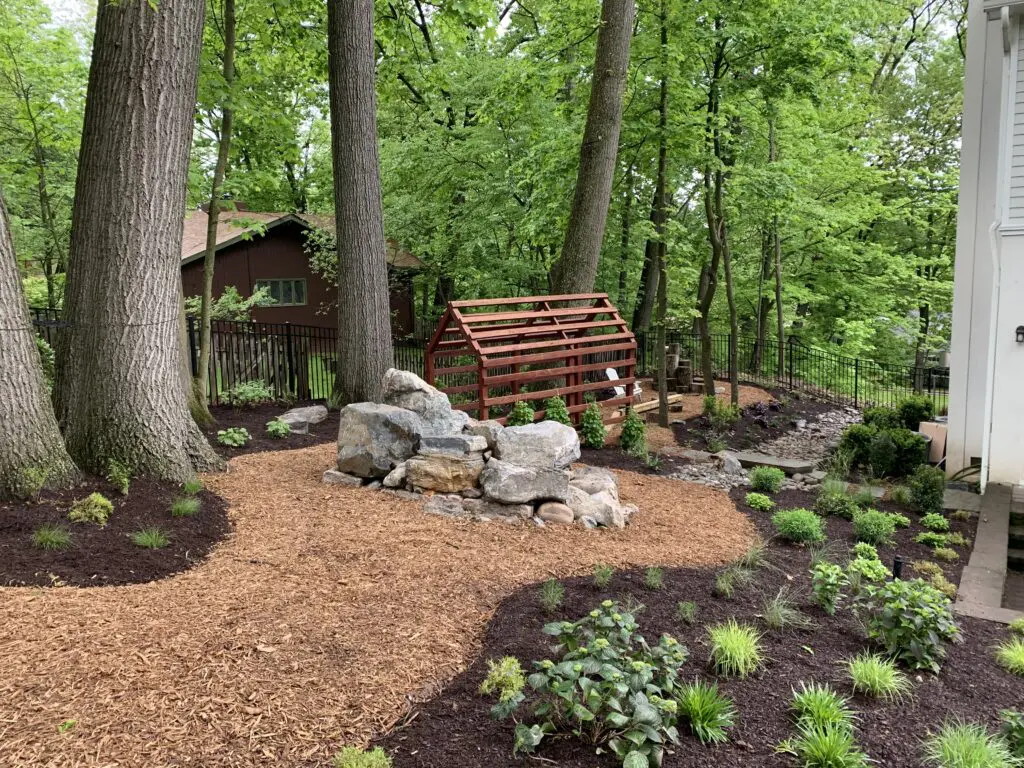
We knew from past designs that woodland trails are a favorite for children – weaving through mature trees and lush underplantings, they inspire exploration, observation and a connection to nature. We decided a woodchip trail would also serve as the connective thread between each play area.
We designed six unique play features using only natural materials:
- Balance Beams – made of wood and log stumps. Helps develop balancing skills, coordination, spontaneous movement.
- Timber Tower – a series of cut logs of different heights create a graduated surface to climb, building strength and agility and inspiring countless king of the hill games.
- Boulder Scramble – a stack of varying size boulders to inspire future rock climbers and build body awareness.
- Stone Bridge – crosses the faux stream bioswale and is a catalyst for imaginative play
- Vining Tunnel – a wooden tunnel acts as a trellis for climbing hydrangea and creates a leafy passage or play house.
- Council Ring – a kid-sized seating area of sitting boulders offers space to rest, discuss and contemplate within the landscape
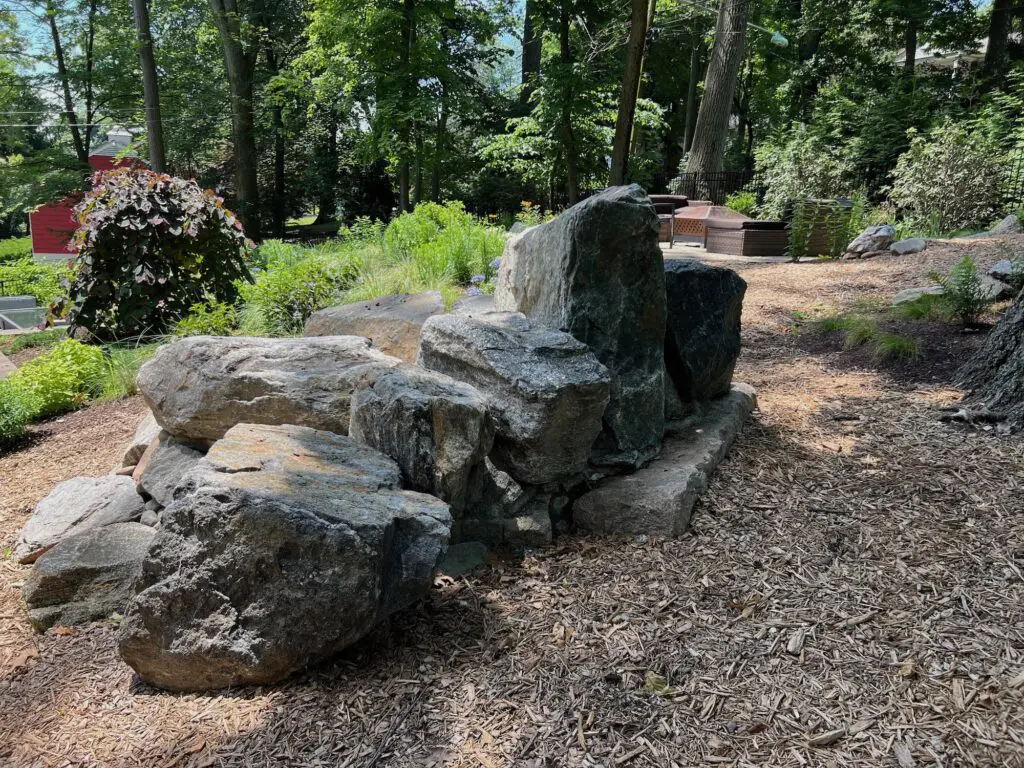
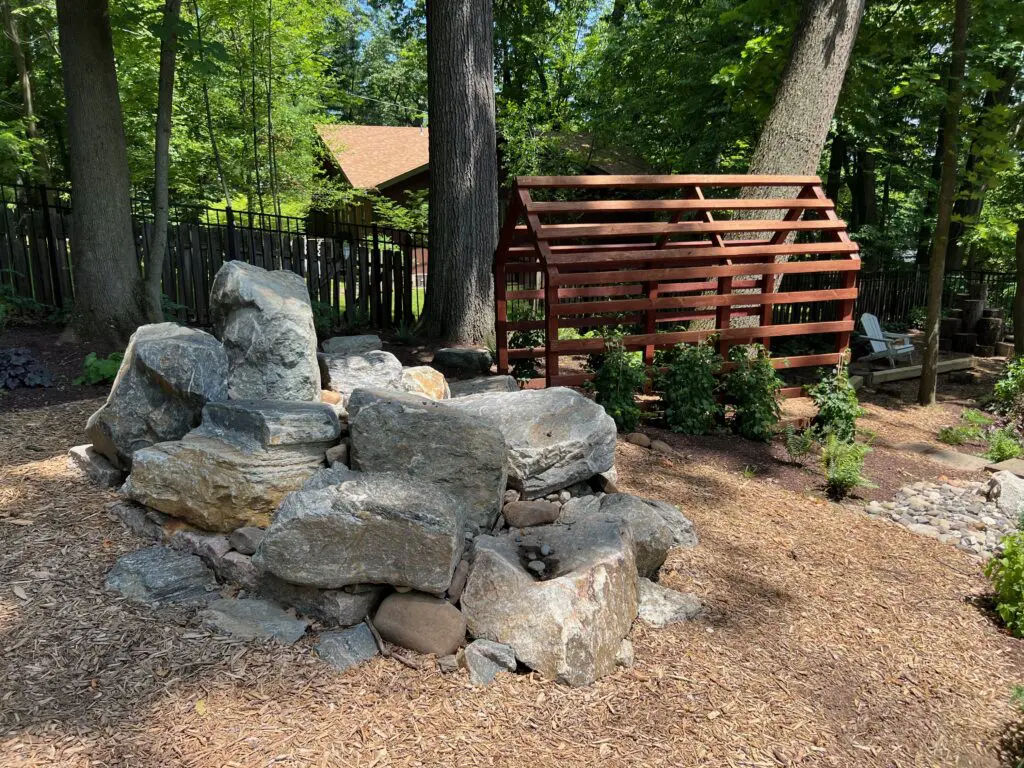


In addition to these unique play areas, we incorporated the clients’ existing playset, setting it on a proper base of Certified Playground Mulch and connecting it to the other play features via woodland trail.
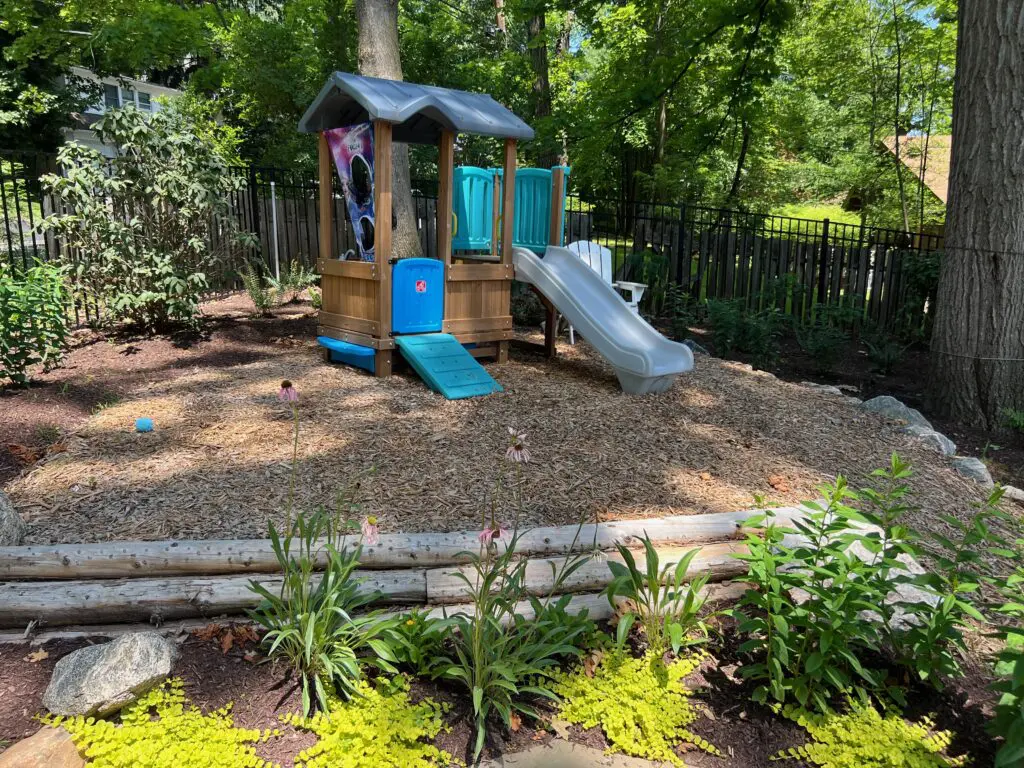
Another prominent feature of this backyard design is the flagstone patio, which we sited at the top of the backyard, next to the play area. This additional patio creates a relaxing area for adults to reside while keeping an eye on the children playing.
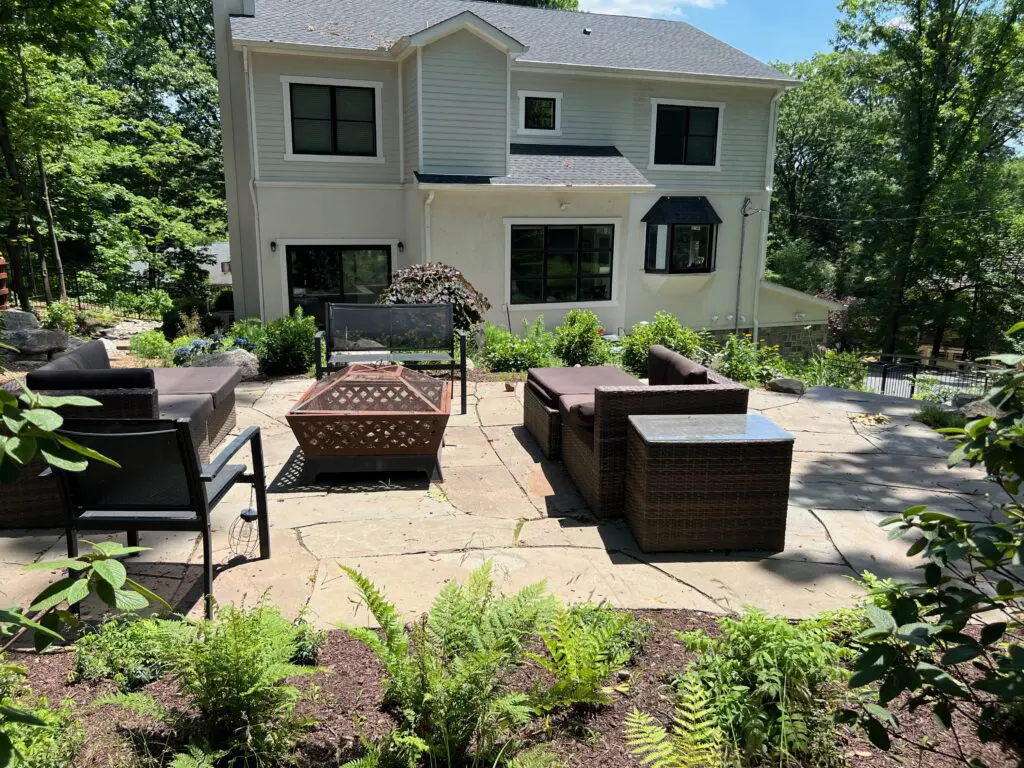
The existing patio of the house is small and can only accommodate a dinning table and grill. The upper patio offered an opportunity for a fire pit and unique views of the new backyard landscaping.
Landscape Construction: Making a Design a Reality
This project involved extensive site development before any planting or play feature construction. The backyard is sloped and mostly lawn, that had succumbed to soil loss from erosion. We knew we needed to add significant amounts of soil to reestablish a planting depth.
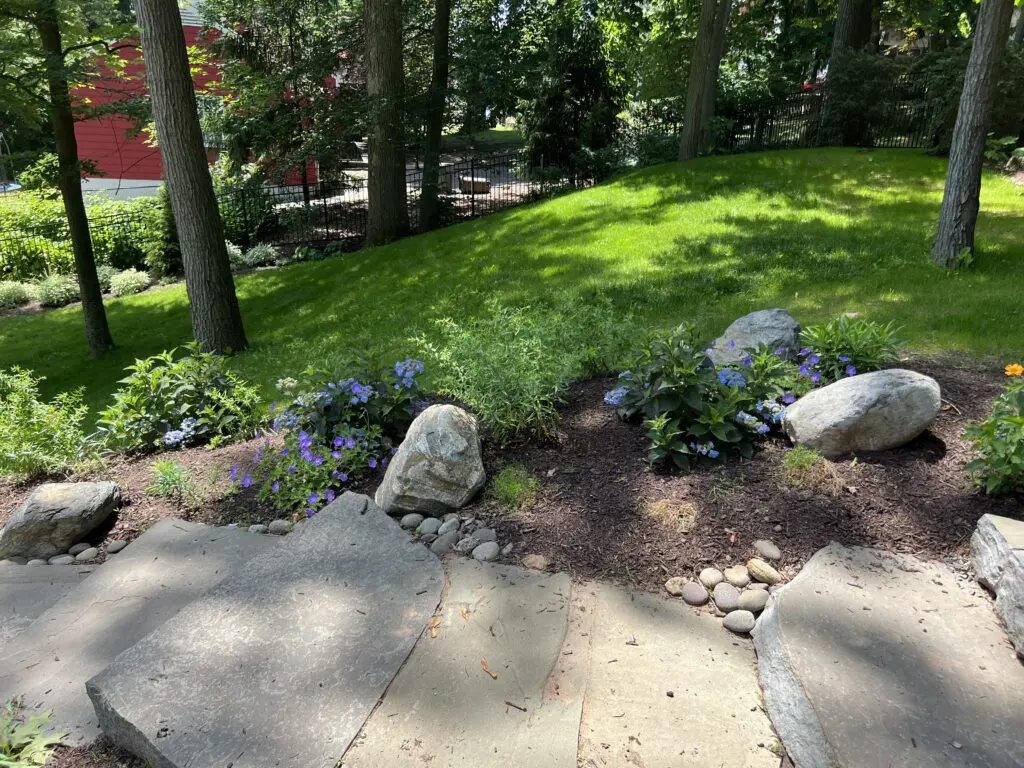
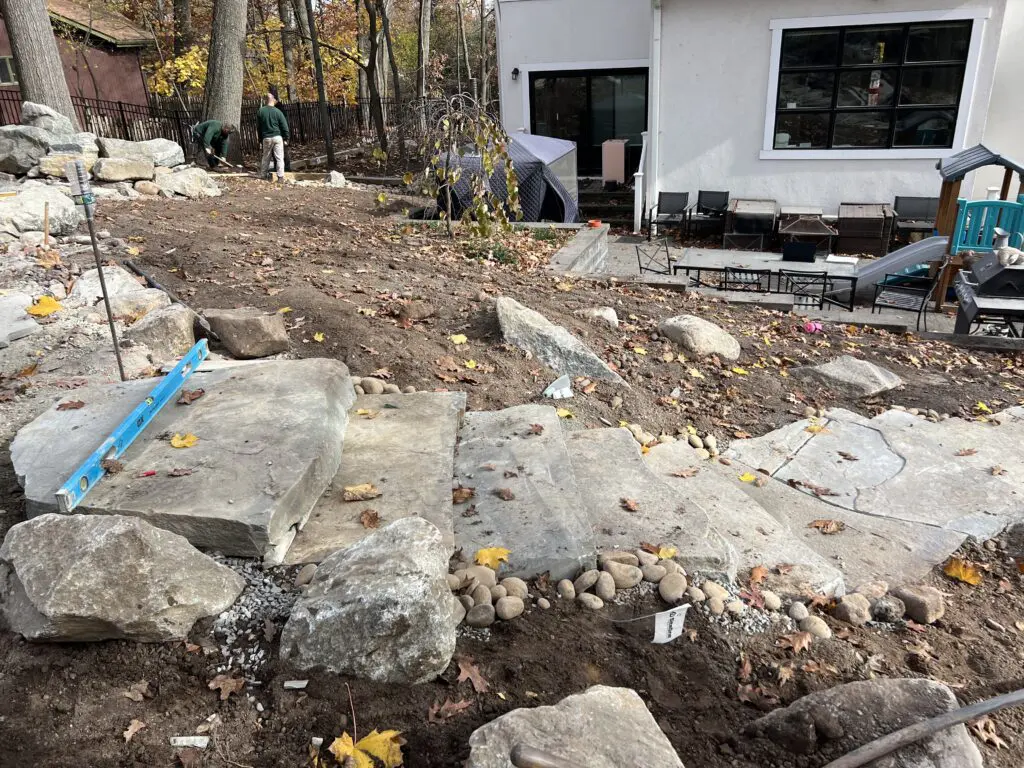
Aside from the flagstone patio, we also needed to construct a fieldstone staircase to connect it to the lower existing patio. Large fieldstone steppers on a rammed Earth base, lined with a “boulder rail” continues the naturalistic aesthetic and feels as if it has always been there.
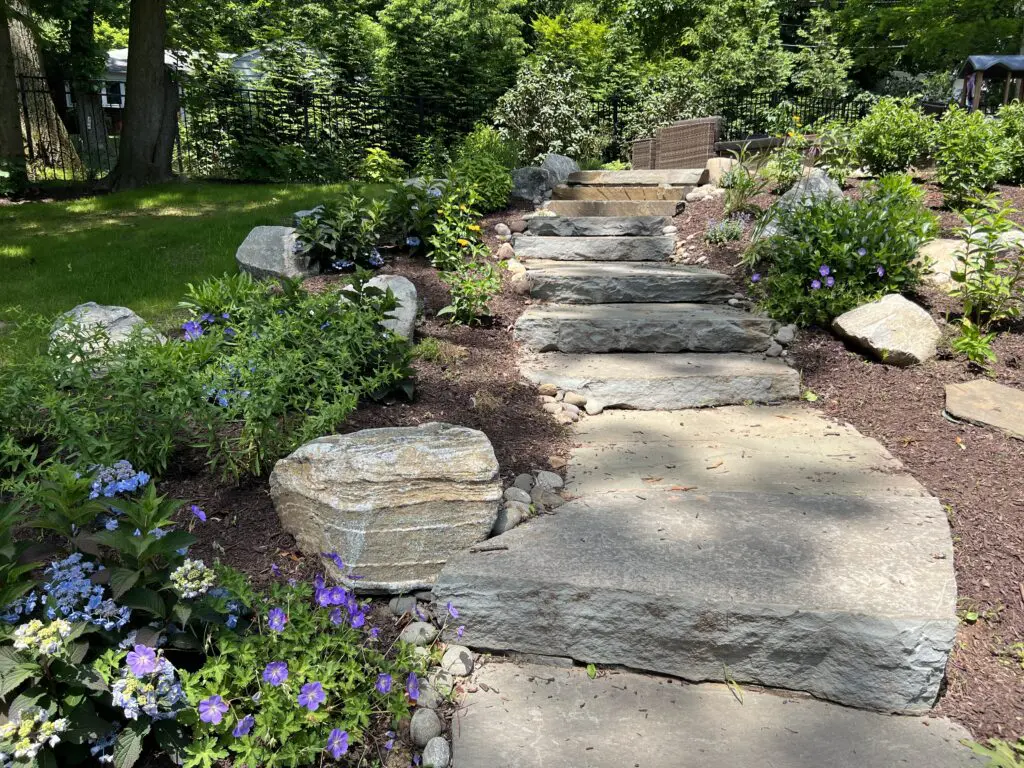
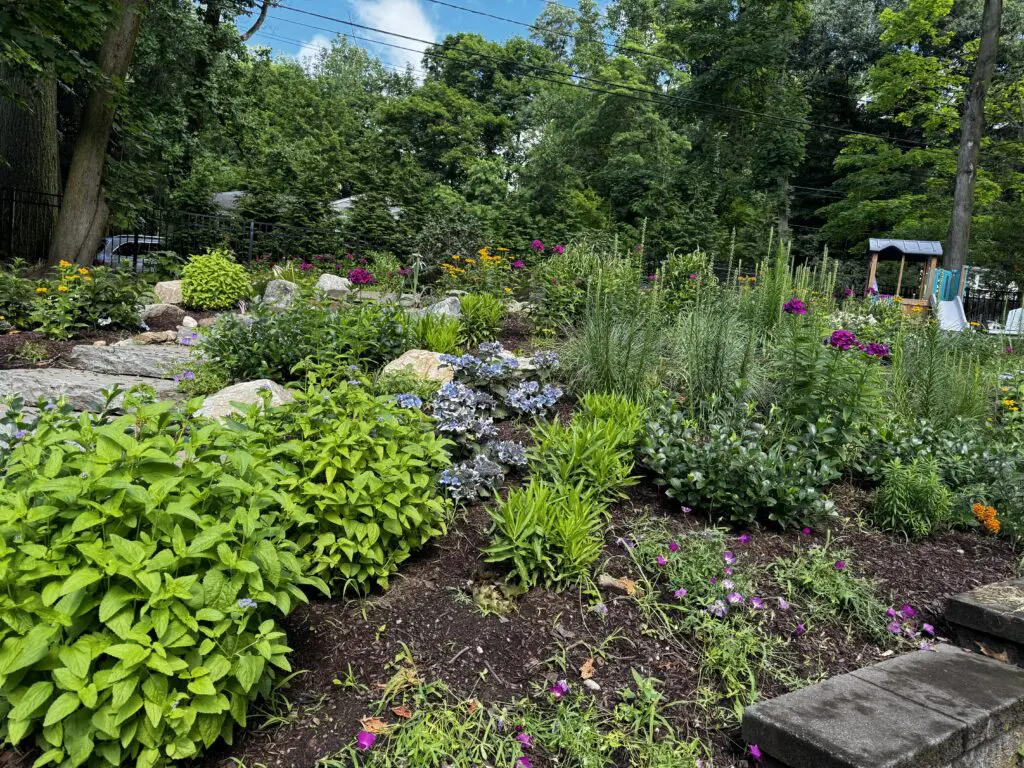
We started the masonry and site development in late fall, which is a great way to get ahead on the project and be slotted for early spring planting installation.
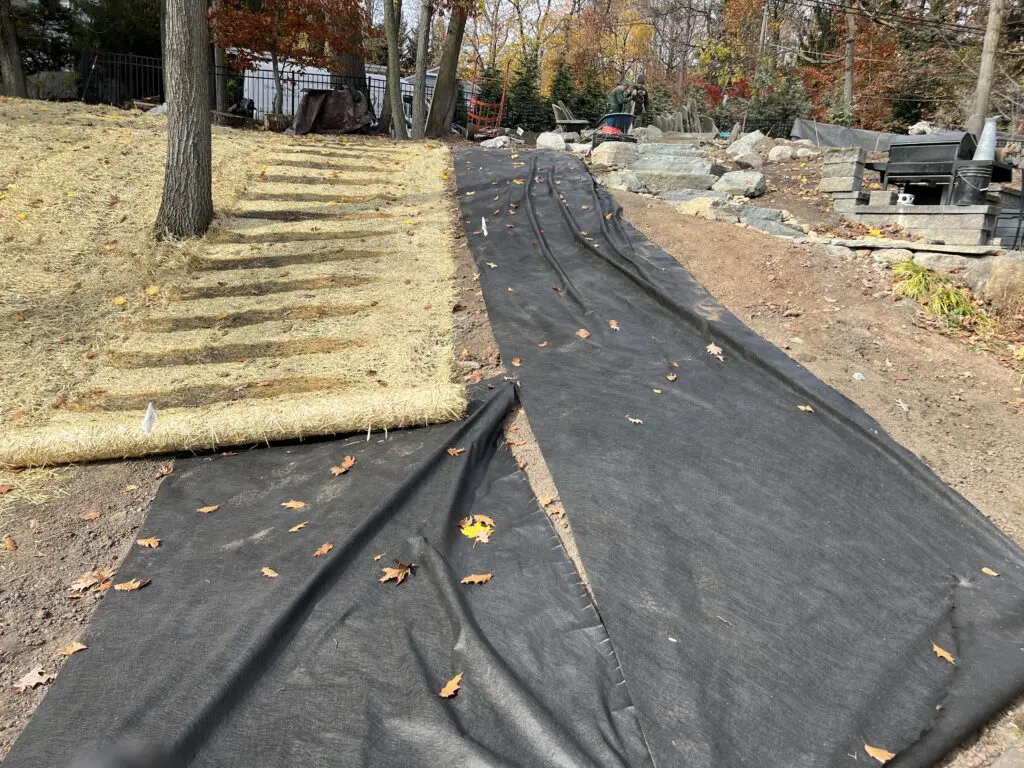
The remaining area of the backyard required a lawn renovation and additional grading. We completed this in November as well, using erosion blankets to secure the slope as the seed germinated. Spot seeding in the spring fills in any gaps from the November germination.
Creative Sourcing for Natural Play Areas
We had never built these kinds of play features before, so we had to get creative with our material sourcing. To construct the Timber Tower, we purchased trunks and large branches from a local tree company and had them cut to specified, varying lengths. We dug a pit, created a layout, and buried 18” of each log to secure it in place.
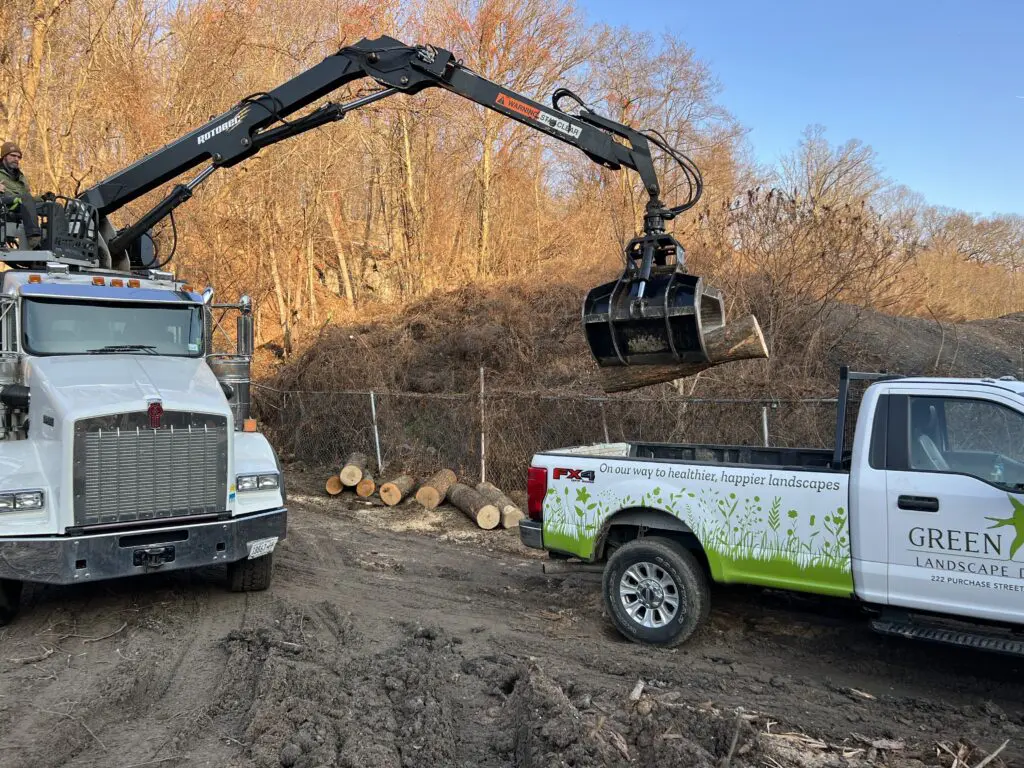

For the Boulder Scramble, we used granite curbing To create the base, then our masons expertly stacked different size boulders on top of each other securely.
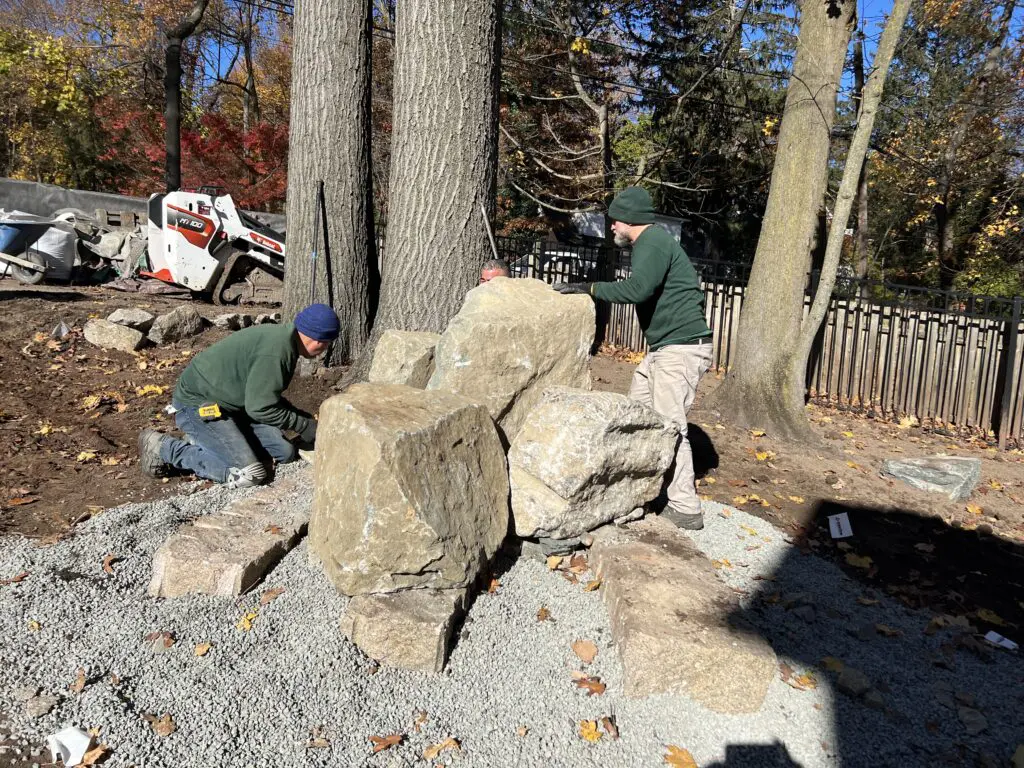
Stormwater Considerations
Since the backyard is sloped, we knew we had to direct and manage stormwater. One side of the backyard naturally collected stormwater, so we decided to turn that zone into a rain garden and use a faux stream bioswale to funnel it that way from the top of the slope. A bioswale is essentially a trench with a gravel base, topped with decorative river rock.
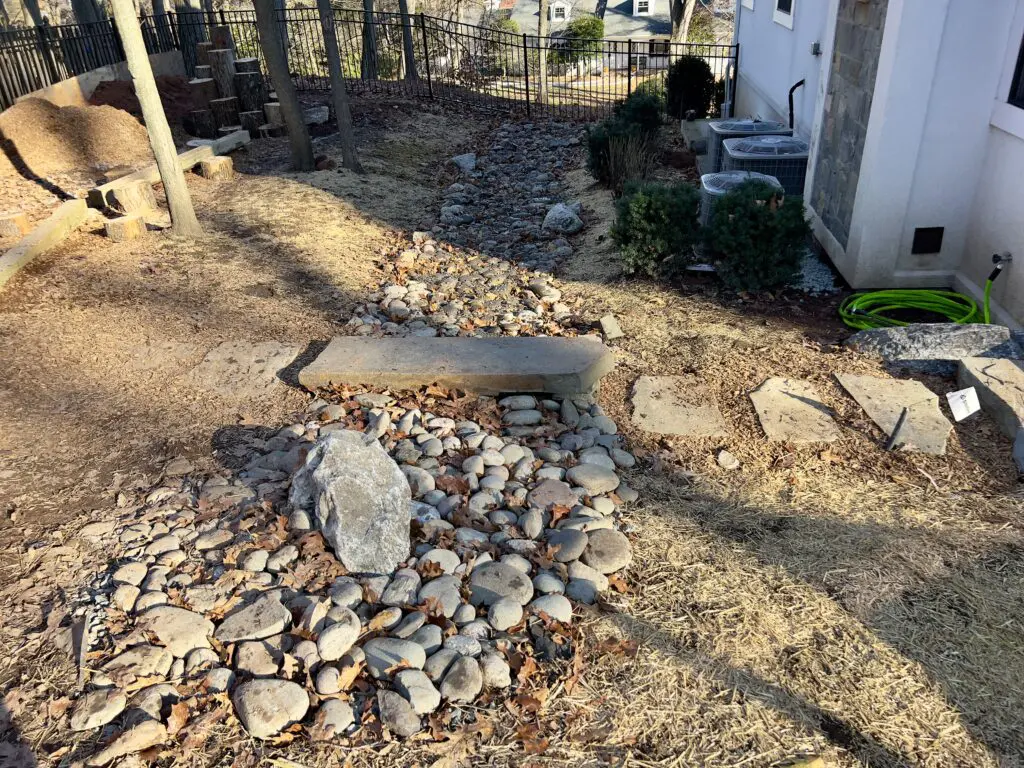
This is a great example of incorporating stormwater management into attractive design elements, rather than using underground drainage infrastructure which is often more expensive and intrusive to install. In this case, adding a stone bridge across the ‘faux stream’ bioswale added another imaginative element to the children’s World of Wonder natural playscape.
Video Tour
If you loved this blog, check out our video tour with Jay himself!
Phase Two Landscape Installation
Now that the clients have the ultimate nature-based play area in their backyard, the next phase will be installing the front yard landscape this spring. The front yard is uniquely challenging, with a steep, shady slope and a history of ornamental bittersweet.
Contact us to start your landscape design project – we love creating family friendly landscapes to inspire the next generation of nature lovers.

